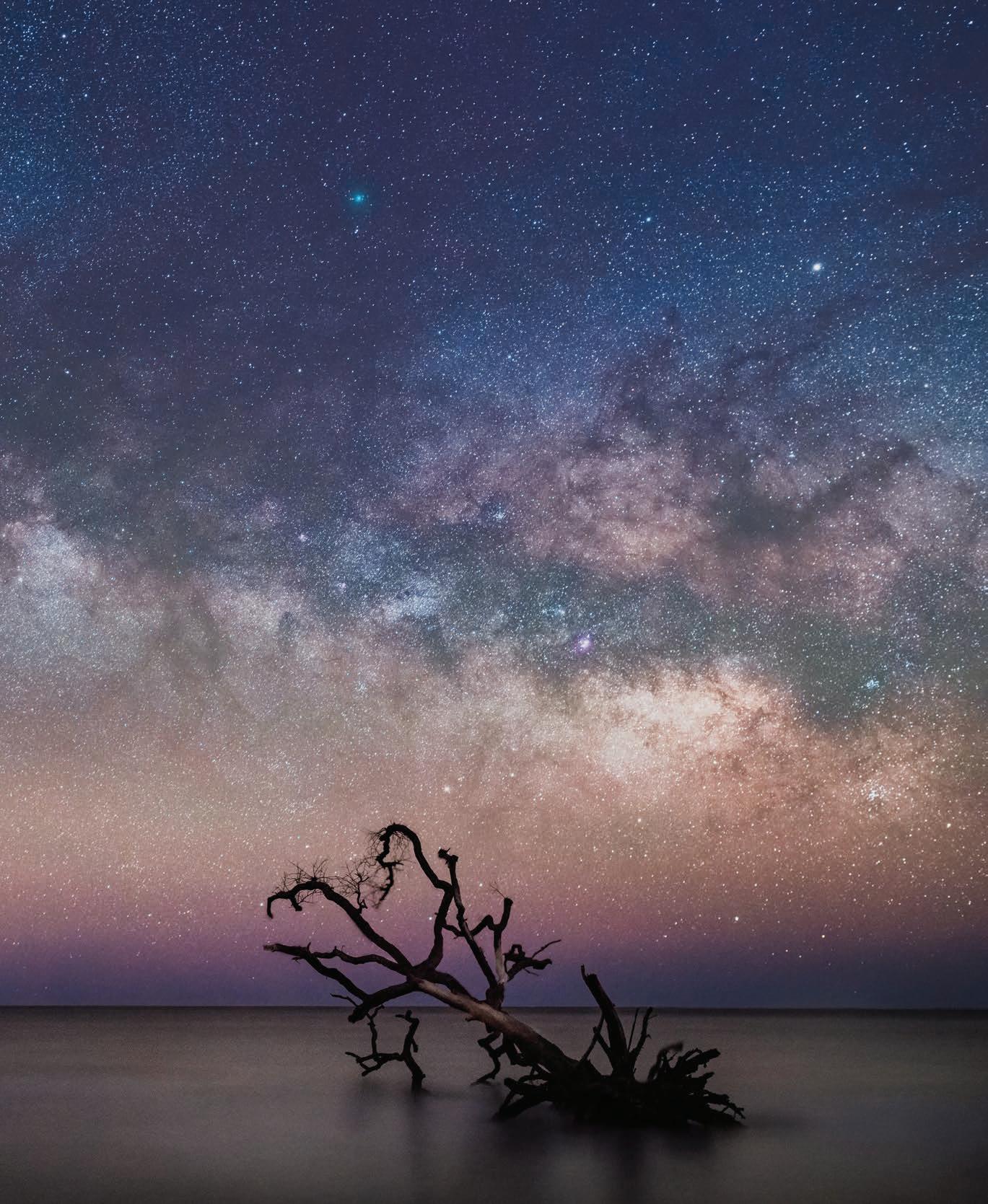




infinity and beyond










infinity and beyond




Two icons of the outdoors now in one Lowcountry location
Built for the Coast. Perfect for the Lowcountry.
The spirit of adventure runs deep, from the forests of Maine to the tidal creeks of the South Carolina Lowcountry. LL Bean’s timeless outdoor apparel and gear are now part of the Outside experience. Explore our curated collection of clothing and accessories made for comfort, quality, and life lived outside.


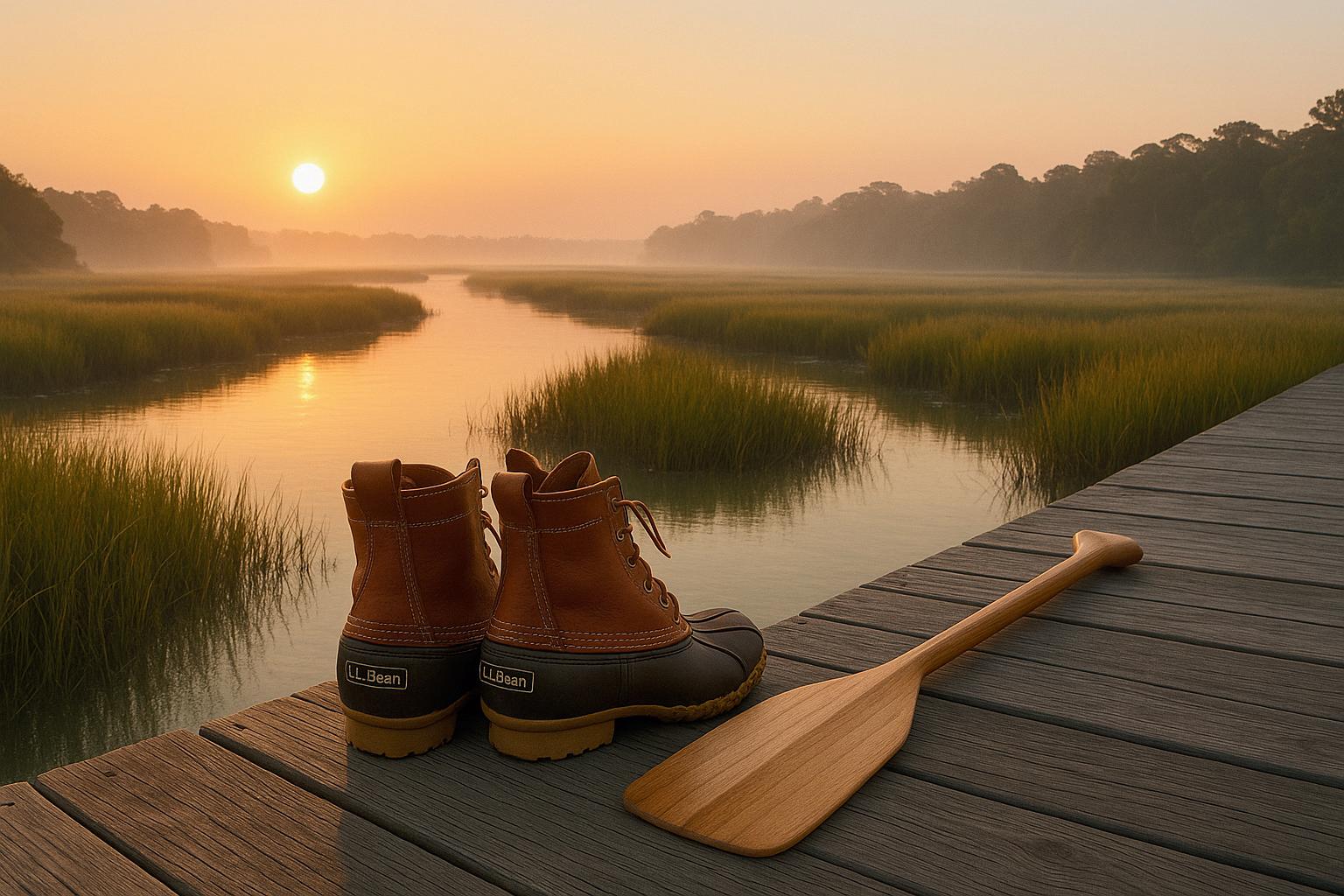








Catherine Donaldson has represented the Sotheby’s International Realty brand for over 17 years. Her commitment to the brand is FIERCE. Call her today to discover why.






Nestled along the pristine salt marshes of the Okatie River lies one of the last remaining legacy waterfront parcels of its kind. The estate is an extraordinary 75 acre parcel offering more than 3,000 linear feet of deepwater and marsh frontage.
With sweeping northeastern exposure, this rare property welcomes the sunrise across shimmering tidal creeks, unveiling a breathtaking Lowcountry landscape that feels secluded, storied, and timeless. Centuries-old live oaks, draped in Spanish moss, stand as sentinels to the land’s enduring heritage. This is more than property: it is a Lowcountry legacy.
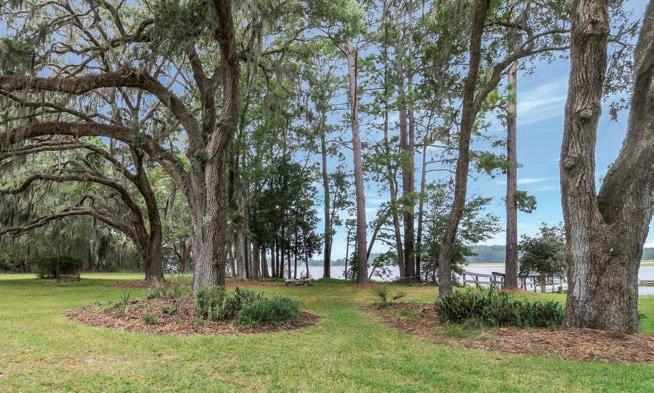




















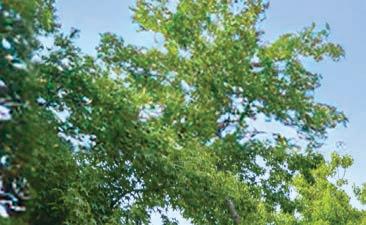
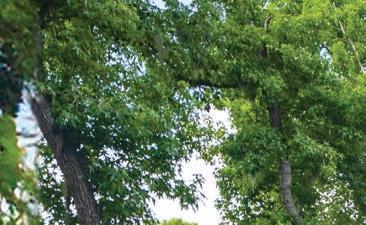

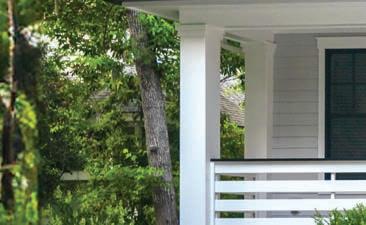






















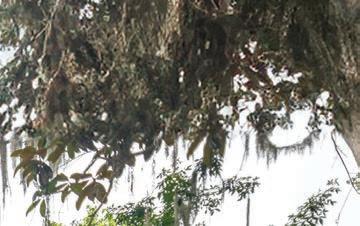





























































































What's the most memorable thing you've ever seen in the night sky ?
“I remember clearly seeing my first shooting star.”
- LORI
“An over-the-top Fourth of July fireworks show in Idaho Falls.”
- LANCE
“Oh nothing, nothing at all... Seriously it was nothing.”
- JEREMY
“Comet Kohoutek. Due back in 75,000 years.”
- CHARLES
“SpaceX rocket launches while living in Arizona.”
- ASHLAN
“A total solar eclipse. Super cool to see it get completely dark in the middle of the day.”
- BAILEY
“The Milky Way from Sleeping Bear Dunes.”
- ALEA
“Seeing the International Space Station glide above me one clear night was pretty spectacular.” - REBECCA
“Watching a meteor shower over the Gulf.”
- KRISTIN
“I never get tired of the beautiful colors of a Lowcountry sunset over the water.”
- LISA
“SpaceX launching.”
- LEAH
“The Nevada desert on a pitch-dark clear night.”
- BRUCE












PUBLISHER
Lori Goodridge-Cribb (Local since 1986) lori.goodridge@wearelocallife.com
EDITOR-IN-CHIEF
Lance Hanlin (Local since 2007) lance.hanlin@wearelocallife.com
ART DIRECTOR / DESIGNER
Jeremy Swartz (Local since 2003) jeremy.swartz@wearelocallife.com
DESIGNER
Charles Grace (Local since 1997) charles.grace@wearelocallife.com
AUDIENCE & CONTENT DEVELOPMENT
Ashlan Saeger (Local since 2016) ashlan.saeger@wearelocallife.com
EDITORIAL ASSISTANT
Bailey Gilliam (Local since 2020) bailey.gilliam@wearelocallife.com
WRITER / CONTENT CREATOR
Alea Wilkins (Local since 2024) alea.wilkins@wearelocallife.com
SALES REPRESENTATIVE
Rebecca Kerns (Local since 1999) rebecca.kerns@wearelocallife.com
SALES REPRESENTATIVE
Kristin Ammons (Local since 2025) kristin.ammons@wearelocallife.com
PHOTO EDITOR
Lisa Staff (Local since 2003) lisa@lisastaffphoto.com
SUBSCRIPTIONS & FINANCE
Leah Ortega (Local in spirit) leah.ortega@wearelocallife.com
DISTRIBUTION & LIST STRATEGIST
Bruce Wolff (Local since 2002) info@wearelocallife.com
Island, SC, 29926 843-802-2258 + LocalLifeSC.com

















As much as the Lowcountry glows during the day, it shimmers differently after dark. When the sun sinks behind the pines and the air turns still, the horizon softens, and the heavens come alive. On a clear night you don’t need a mountain summit or a desert plain to feel small beneath something vast. The beaches, marshes and open fields of our coast offer a front-row seat to the universe, a reminder that wonder doesn’t always require distance, only attention.
this breathtaking
the park
Starry nights
Five places on HHI where the stars truly shine
the
reserving a campsite if you
at night, and campers enjoy rare after-hours access to its pristine beaches and wide-open skies. Find more of Zach's local stargazing tips on page 118
100
Between the tides
Exploring the moon’s quiet pull on local life
112
Eyes on the heavens
What to watch for in the night sky this season
126 26 30
Stellar stories
Books that reach for the stars and bring the reader along
106
The original GPS
The art of finding direction by the stars, Lowcountry-style
122
Look up, Lowcountry
How to spot the space station soaring above our coast
UFOs in Dixie skies
Unexplained sightings that still have the South talking
130
Local horoscope
Your celestial forecast, straight from the Lowcountry skies








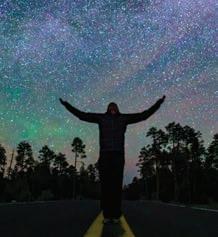







“Shoot for the moon. Even if you miss, you’ll land among the stars.”
- NORMAN VINCENT PEALE

tThe moon has always had its say in the Lowcountry. It tugs at the tides, shifting the sand beneath our feet, feeding the marsh and guiding fishermen who still watch the water as closely as the weather. Its pull shapes the rhythms of life here, from the shrimp tucked into tidal creeks to the oysters that thrive because of its cycles. Without it, our coast and the way we live alongside it would be unrecognizable.
The night sky offers a different kind of tide, one that pulls at our sense of wonder. Most of us get caught up in the day-today, forgetting that above the live oaks and salt marsh is a whole universe just waiting to be noticed. We don’t need to travel to the desert or a mountaintop to see it. On a crisp fall or winter night, when the sky clears and the humidity drops, all it takes is a dark spot and a little patience. Constellations begin to take shape, and faint stars shine brighter. If you’re lucky, you might even spot the International Space Station as it streaks by overhead.
Stargazing, like fishing a tide or walking a moonlit beach, grounds us. It reminds us that our lives are part of a larger story. That story was written in the sky long before us, and it will stretch on long after. In a world that often feels noisy and fast, looking up can be the pause we didn’t know we needed.

SCAN TO SUBSCRIBE
Don’t miss an issue of LOCAL Life. Scan this QR code to subscribe to the upscale lifestyle magazine of Hilton Head Island, Bluffton, Beaufort and beyond.
That is what this Celestial Issue is really about: slowing down, paying attention and letting the sky put things in perspective. Whether you’re a lifelong sky-watcher or someone who rarely looks past the streetlights, we hope this issue encourages you to step outside on a clear night, take a breath and find your own place among the stars.
Clear skies,

LORI GOODRIDGE-CRIBB PUBLISHER lori.goodridge@wearelocallife.com
I’m an Aquarius through and through, which means I see the world a little differently. We’re the dreamers and the big-picture thinkers, always asking questions and rarely content with the ordinary. At times unpredictable, but always chasing new ideas, Aquarians like me tend to live with one foot on the ground and the other reaching for the sky. Astrology or not, it’s always fun to see how the zodiac stacks up. Do these traits sound like you or someone you love?
Aries (March 21-April 19):
Bold, energetic, headstrong Taurus (April 20-May 20):
Grounded, dependable, comfort-loving Gemini (May 21-June 20):
Curious, witty, adaptable Cancer (June 21-July 22):
Nurturing, protective, sensitive Leo (July 23-Aug. 22):
Confident, charismatic, generous Virgo (Aug. 23-Sept. 22):
Practical, detail-oriented, thoughtful Libra (Sept. 23-Oct. 22):
Diplomatic, charming, fair-minded Scorpio (Oct. 23-Nov. 21):
Passionate, perceptive, determined Sagittarius (Nov. 22-Dec. 21):
Adventurous, optimistic, blunt Capricorn (Dec. 22-Jan. 19):
Ambitious, disciplined, devoted Aquarius (Jan. 20-Feb. 18):
Independent, visionary, unconventional Pisces (Feb. 19-March 20): Imaginative, empathetic, intuitive


ROLLING INTO RELIEF Have you seen the LOCAL Life Jeep cruising around town?
This month we rolled up next to the crew at Discover Specific Chiropractic. From left: Tristan Horup, Dr. Ken Horup, Chantal Horup, Paige Baltimore and Drew Kender
The team is ready to help if knee pain, foot pain, balance issues or those pesky numb-andtingly hands and feet are slowing you down.



OTHER CREDS: Ph.D. and master’s in poetry and creative writing from Florida State University. Latest book: Warrior Rainbow, Finishing Line Press, 2023. FOR THIS ISSUE: Local poem, Wolf Moon ZODIAC SIGN: Capricorn HOMETOWN: Manistee, Michigan CURRENT HOME: Beaufort LOCAL SINCE: 2004 HOBBIES: Playing flute, painting, photography WHAT ARE YOU WATCHING? Barefoot in the Park and The Way We Were. I often watch foreign films on Hoopla, especially French. WHAT ARE YOU LISTENING TO? Tab Benoit, Susan Tedeschi and the latest blues music. WHAT ARE YOU READING? Joy Harjo’s American Sunrise, Cassandra King Conroy’s Tell Me a Story and my friend Quitman Marshall’s latest nonfiction, Swampitude: Escapes with the Congaree WHAT ARE YOU DRINKING? Hugo spritz. And of course, Beaujolais. FAVORITE STARGAZING MEMORY: A night sail on a 30-foot sailboat from St. Thomas, U. S. Virgin Islands, to Tortola, British Virgin Islands. Never have I seen a sky of stars like that night!



OTHER CREDS: Indiana University 2025 graduate FOR THIS ISSUE: Navigating the stars, spotting the ISS, planetarium road trip, meteor shower and lunar eclipse guide, hot tech ZODIAC SIGN: Capricorn HOMETOWN: Damascus, Maryland CURRENT HOME: Hilton Head Island HOBBIES: I recently got back into running. WHAT ARE YOU WATCHING? Because it’s finally fall, I am doing my annual rewatch of Gilmore Girls WHAT ARE YOU LISTENING TO? Man’s Best Friend by Sabrina Carpenter WHAT ARE YOU READING? The Guest List by Lucy Foley WHAT ARE YOU DRINKING? Berry Cosmo WHAT DO YOU LOVE MOST ABOUT THE LOWCOUNTRY? The beaches are hands-down my favorite part, and running here is easy when the view is perfect. FAVORITE STARGAZING MEMORY: Summer nights on the back porch of my grandparents’ house at Lake Hartwell where my grandma taught me the constellations.
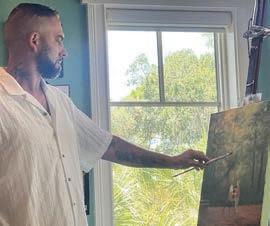



OTHER CREDS: Public speaker, entreprenuer, co-founder of Art 4 Hope and Advanced Artists of Allendale FOR THIS ISSUE: Local art, Shante's Moon ZODIAC SIGN: Sagittarius HOMETOWN: Adam's Run, SC
CURRENT HOME: Charleston LOCAL SINCE: I grew up in the Lowcountry and returned this year. HOBBIES: Fishing, pottery, various types of collecting WHAT ARE YOU WATCHING? Orphan Black on Netflix WHAT ARE YOU LISTENING TO? An eclectic mix of Phil Collins, Morgan Whallen, Jelly Roll and Prince. WHAT ARE YOU READING? Emotional Intelligence by Daniel Coleman
CURRENT PROJECT: A beautiful scene of sunlight peeking through Spanish moss hanging from the most regal oak trees. WHAT INSPIRES YOUR ART? First and foremost, the perfection I see around me that derives from the hand of our awesome creator. Secondly, a deep emotional connection to the scenes, people and their stories. FAVORITE STARGAZING MEMORY: After years of light pollution, that first time back in the Lowcountry, lying in the grass at night and looking up to see heavenly bodies I hadn't seen in so long. Emotion washed over me, and I teared up. FAVORITE CELESTIAL BODY: The full moon. A symbol of light through the darkness, of new beginnings and so much more.
Others who reached for the stars this issue ...
PHOTOGRAPHERS Jamie Anderson + Robbie Bischoff + Mark Cavallo + Arno Dimmling + Steve Eberhardt
Zach Grether + Bill Gwynne + Matt Holmes + Jeff Keefer + Rebecca Lehde + Amia Marcell + Alyssa Marian + Reid McCall
Ruth McCully + John McManus + Chrissy Mozeleski + Kendra Natter + Lisa Staff + Mary Alice Tartler + Lily Whitener
WRITERS Suzanne Barton + Stephen Combs + Daisy Dow + Becca Edwards + Sassa Enscoe + Kim Epley + Audrey Geib
Denise Friday + Barry Kaufman + Carolyn Males + Sheila Paz + Margaret Pearman + Richard Thomas + Carol Weir
CONTRIBUTORS Amanda Castillo + Marcia Cornell + Jean Meaney Wheatly

There’s a lot to do in life. Through comprehensive wealth management, our team helps people focus on what matters most. We are a fiduciary partner, whose sole focus is your financial well-being — and the peace of mind that comes with it.










HHI's best restaurants and bars to catch the game

Instagram exclusive: Whether you’re rallying with friends or sneaking in a side of arcade games, these island favorites make every down feel like a win. instagram.com/locallifesc

1
Tips for spotting real worth in vintage and antique items
2 Turn your gourds into décor with pressed flower pumpkins
3
Making your own butter is surprisingly easy and customizable






The right lighting doesn’t just brighten a room. It sets the mood, shows off your home’s best features and makes every space feel just right. Scan this QR code for local know-how from CAV Integrated Home






This month’s cover features "The Last One," a breathtaking photograph captured by Zach Grether at Hunting Island State Park.“There’s something about the way the horizon transformed the color of the sky as it rose over a dark ocean that makes this one of my favorites,” Zach said. “If you don’t normally shoot over the ocean, you’ll never get this lowlevel marine haze that changes the color of the sky. The timing of the shoot, when the Milky Way core was just above the haze line, allowed it to appear perfectly clear. That’s what makes the image for me.” See more of Zach’s work at zgrethphoto.com.

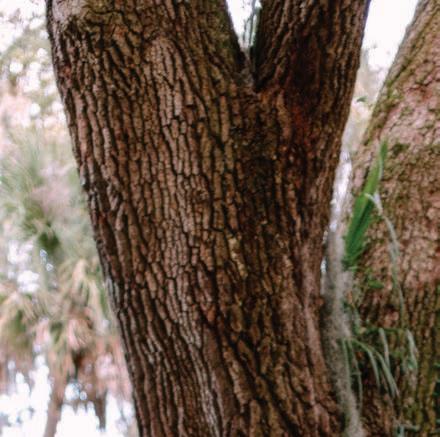
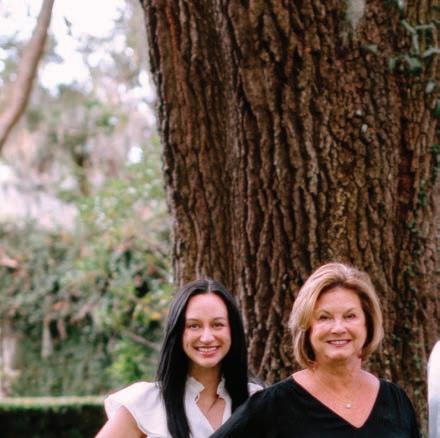
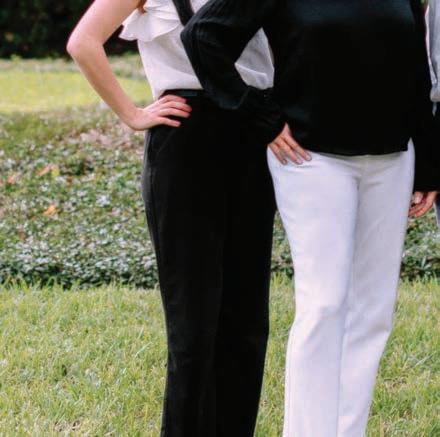
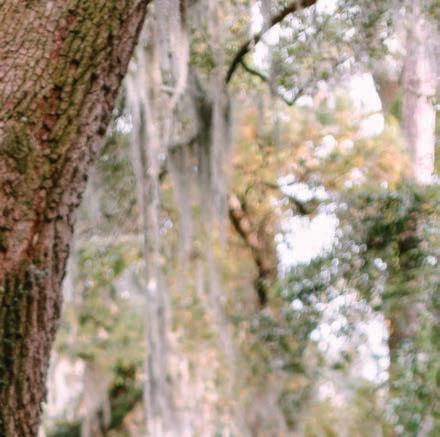



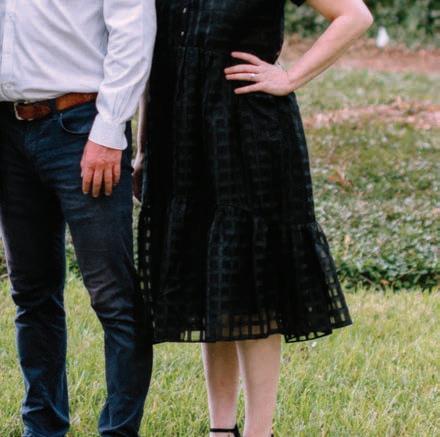



Experience matters when selling a home, and the rake eal state eam offers a personalized approach, an in-depth knowledge of the high-end coastal market, and exceptional marketing skills. The Drake Real Estate Team is committed to making your experience a positive and successful one.

















STORY BY LANCE HANLIN
wWhen the sun goes down, Hilton Head still has plenty of glow from neighborhoods and resorts, which can make stargazing a challenge. The beaches are a natural front-row seat to the night sky, but not every access point is open after hours. While the shoreline itself is open around the clock from the ocean to the high-water mark, getting there isn’t always simple. To help, here are five easy-toreach spots that offer some of the island’s best views on a cool, clear November night.



SOUTH BEACH At the very heel of Hilton Head near Braddock Point, the night feels still, and the skies stretch wide. It’s one of the island’s most peaceful places to look up.
Pros: Public parking areas and paths in Sea Pines lead to a dark, tranquil shoreline. After hours the only sound is the surf. The southern horizon opens beautifully across sand and ocean, and the dunes create striking silhouettes for nightsky photography. Before or after your stargazing session, the Salty Dog Café offers a cozy stop, especially in November, when tourist crowds have thinned.
Cons: Access requires a Sea Pines pass. Some paths are narrow, winding or raised and can feel tricky in the dark, so bring a red flashlight for safe footing. While the skies here are darker than many island spots, faint galaxies and clusters may still be softened by a slight glow.


COLIGNY BEACH By day it’s Hilton Head’s busiest beach, but after dark Coligny turns into a wide-open theater for the stars. The vibe is lively, eclectic and never quite the same twice.
Pros: Easy access makes Coligny a stargazer’s friend. The shoreline is always open, the sky views are big and clear, and you are just steps from restaurants and bars. It is an ideal spot for dinner before or a nightcap after. Bring a wagon for your gear since the walk from the lot can feel long with full arms.
Cons: The crowd is unpredictable. One night you will see families strolling on the sand; another night it might be bar hoppers heading home or fishermen camped by the surf. Sometimes it feels lively, sometimes a little sketchy, but always entertaining. The peoplewatching can rival the stars.

MITCHELVILLE/FISH HAUL For a rugged, natural experience, head to Hilton Head’s northeast corner. The Mitchelville/Fish Haul area feels wilder than most island beaches, and that raw edge makes the sky seem even bigger.
Pros: Secluded and largely undeveloped, it offers true darkness, with wide stretches of sand, tidal flats and driftwood that frame the stars beautifully. Once you’ve walked past the marsh paths, the view opens up, making it one of the island’s best spots for casual, no-frills stargazing.
Cons: Park facilities close at dusk, so you’ll need to leave your car along the road and walk in. The area can feel less secure after dark, so it’s best to go with friends. There are usually no beach mats, which makes hauling gear tougher, and the paths are uneven, with roots and the occasional critter. This area is best suited for stargazers who enjoy a bit of adventure with their astronomy.

SEA PINES BEACH CLUB If you like a little comfort with your constellations, the Beach Club is your spot. Clean, well-kept and easy to reach, it offers one of the island’s most convenient setups for an evening under the stars.
Pros: This is stargazing with amenities. Coast, the Ocean Lounge, bathrooms, showers and changing rooms are all close by, and parking is usually simple after dark, even in busy summer months. Sea Pines' rules limit exterior lighting, making constellations, planets and bright stars easy to spot. A short walk from the main club area reveals quieter patches of darkness.
Cons: Access comes at a price. Non-residents pay $9 at the gate or $50 for an annual Pelican Pass. As a resort facility, it has its share of ambient light, which dims faint stars. For deeper sky views you’ll need to venture farther from development.
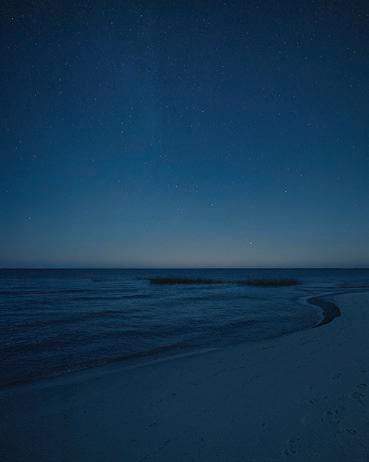
BURKES BEACH At the end of Burkes Beach Road you’ll find a quieter, less-developed stretch of sand that locals love for its space and solitude.
Pros: Public access makes it easy to reach, and at low tide the beach opens wide for unobstructed views. The stretch between Burkes and Singleton is especially good, free of houses and street lights so the stars shine brighter. On the right night you can even pick out distant galaxies and clusters.
Cons: The small lot by the access closes at night, so you’ll need to use nearby street parking. The last trek through soft sand is a workout with gear, though a folding wagon makes it easier.























Celestron Origin Intelligent Home Observatory
Turn your backyard into the cosmos. With AI-powered imaging and precision optics, the Celestron Origin delivers crystal-clear views of galaxies, nebulae and stars, all from the comfort of home. Whether you’re a seasoned astronomer or a curious beginner, it’s the ultimate ticket to the universe. vakkerlight.com, $3,999
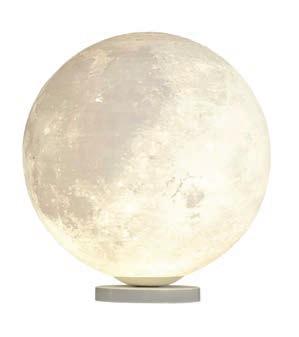

Celestial gear that brings the night sky a little closer
SELECTIONS BY MACKENZIE LIONBERGER

Tripod X


Planetarium Projector
Drift off under your favorite constellations. This night light from Sharper Image projects a celestial canopy across your room, creating the ultimate bedtime vibe. It’s part art, part comfort and all starlight. sharperimage.com, $96



True Night Vision Binoculars
Get closer to the stars without squinting. These hightech binoculars by Sharper Image bring crisp clarity to night skies, whether you’re camping, stargazing or just exploring the backyard after dark. A handy gadget you’ll never regret packing. sharperimage.com, $143

Moon Table Lamp
Why wait for moonrise? This glowing lamp brings lunar calm to your living room, bedroom or reading nook. A soft, silvery glow turns any corner into a tranquil retreat. vakkerlight.com, $142

Blurred photos are a thing of the past. Built with a motorized self-leveling feature and housed in a travel-ready case, the Tripod X keeps your night-sky shots sharp and steady. Perfect for professional photographers or anyone who wants brag-worthy star captures. edelkrone.com, $2,990




LED Moon Phase Simulation Clock
Track time the celestial way. This LED clock cycles through the moon’s phases as it keeps you on schedule, reconnecting your mornings to the night sky. A simple but stunning addition to any desk or nightstand. sharperimage.com, $64


Citizen Campanola Cosmosign CTV57-1231
High-precision 14-plate printing is used to create a scientifically accurate star map of 1,027 heavenly bodies and 166 galaxies and nebulae. It's a microcosm of the celestial sky on your wrist, a window into the far reaches of time and space. citizenwatch-global.com, $2,923


Garmin InReach Messenger
Stay connected even when your cell service fades away. This satellite messenger lets you send texts, share your location and trigger SOS alerts, so you can hike, camp or stargaze with peace of mind. garmin.com, $250



Klarako Crystal Lantern
Bring a little vintage glow back to your nights. Etched crystal designs and multiple light settings make this lantern a stylish throwback with modern convenience. Even better, buy one and get a second free; a deal that feels written in the stars. klarako.com, $140















Denise Friday, a school social worker at Hilton Head Island Elementary and mother of twins, finds both joy and reflection in a good book. For the Celestial Issue, she turns her gaze skyward with a collection of books that journey through space, time and the depths of the human heart.


THE MARTIAN BY ANDY WEIR
Astronaut Mark Watney becomes one of fewer than 20 people to walk on Mars. When a dust storm forces his crew to evacuate, they assume he’s dead and leave him behind. Stranded and unable to reach Earth, Mark relies on his sharp wit, scientific know-how and pure MacGyver-style ingenuity to fight for survival. A clever blend of science fiction and dark comedy, The Martian is a brilliant testament to human resilience against impossible odds.
THE ASTROLOGY HOUSE BY CARINN JADE
Margot, a new partner at a busy law firm, thinks she’s found the perfect getaway for herself and her stressed-out friends. Stars Harbor Astrological Retreat promises rest, stunning views and nightly astrology readings. But as Margot’s brother, his wife, and their friends settle in, hidden secrets begin to surface. The host seems increasingly strange, and what was meant to be a relaxing weekend soon turns deadly.


ATMOSPHERE: A LOVE STORY BY TAYLOR JENKINS REID


Joan Goodwin, a physics professor, becomes one of the first female astronauts in NASA’s Space Shuttle program in the 1980s. The novel follows her grueling training, the challenges of being a woman in a male-dominated field and her secret love affair with a fellow astronaut. The story is so heartfelt and the characters so vivid, you’ll forget you’re reading fiction.
CELESTIAL BY M.D. LACHLAN
Ziggy Da Luca isn’t an astronaut; she’s a linguist. But when NASA recruits her for a 1977 moon mission to decode strange markings found on a mysterious hatch discovered by the Russians, she can’t refuse. What the crew uncovers inside the hatch defies imagination. A must-read for fans of smart, suspenseful science fiction.

Tuesday thru Friday 10 until 5 Saturday 10 until 4

TO THE MOON AND BACK BY ELIANA RAMAGE


Steph Harper has one singular dream: to be the first Cherokee astronaut to walk on the moon. At 6 years old, she and her sister fled domestic violence with their mother to the Cherokee Nation, searching for safety and belonging. Spanning three decades, this powerful debut novel follows Steph’s pursuit of her dream, the bonds that shape her life and the sacrifices she makes to earn NASA’s approval.
LOCAL Life’s Rebecca Kerns, an avid reader, shares her take on Atmosphere: A Love Story by Taylor Jenkins Reid in “Rebecca’s Reading Room Chat,” a video book series inspired by Denise Friday’s book recommendations. Watch it now on LOCAL Life’s YouTube channel: youtube.com/@locallifesc

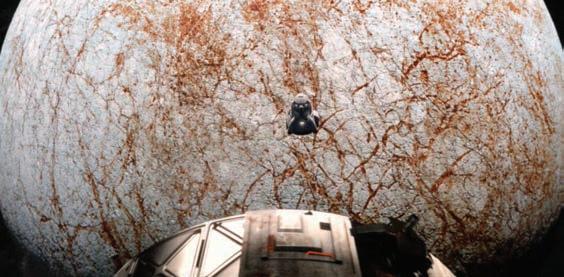
The Midnight Sky (2020)
Personality: You believe in distance, longing and messages across voids.
Why you’ll love it: George Clooney directs and stars in this contemplative post-apocalyptic drama. As a lone Arctic scientist races to reach a returning spaceship, the film meditates on grief, connection and the fragile hope that survives across space.
A constellation of six overlooked films, each orbiting a different kind of viewer than
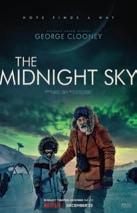

CELESTIAL SCALE
Gravity pull: Heavy with emotion, anchored by loneliness and longing
Cosmic clarity: Bleak Arctic horizons mirrored against glowing star fields
Meteor shower vibe: Best watched on a quiet night under a real sky
Stream it: Netflix
Cargo (2019)
Personality: You like sci-fi that mingles with philosophy, myth and human strangeness.
Why you’ll love it: Part of India’s quiet wave of indie sci-fi, Cargo imagines souls recycled aboard a spaceship run like a cosmic HR department. Quirky, humane and strangely hopeful, it’s a film most American audiences never heard of.


CELESTIAL SCALE
Gravity pull: Gentle reflections on life, death and the afterlife
Cosmic clarity: Stark cabins lit with mystic hues
Meteor shower vibe: A latenight detour into something spiritual Stream it: Netflix
STORY BY LANCE HANLIN
When you look up at the night sky, it’s easy to imagine stories written in the stars. Some films take that wonder and turn it into noisy spectacle, but the real treasures are the ones that slip quietly past most watchlists. These cosmic tales are stranger, more intimate, more haunting. They ask what it means to hope across a void, to measure life against infinity or to drift when there’s no way home. Each of these overlooked gems pairs with a certain kind of stargazer.
Find the one that matches your orbit, press play, and let the universe unfold.
THE COLD FRONTIER The 2013 science fiction film Europa Report captures deep-space exploration with rare authenticity, pairing the grandeur of Jupiter’s icy moon with the grit of a cramped spacecraft. Smart, suspenseful and quietly beautiful, it is a convincing portrayal of life far beyond Earth.
Europa Report (2013)
Personality: You trust the data, love realism and want surprises grounded in science.
Why you’ll love it: A private mission to Jupiter’s moon Europa turns fatal, but the story focuses on methodical exploration, claustrophobic tension and scientific wonder rather than spectacle. Often overlooked in favor of flashier titles, it offers convincing depictions of deep-space travel.


CELESTIAL SCALE
Gravity pull: Relentless pressure of science versus survival
Cosmic clarity: Icy moons, deep voids and unsettling closequarters realism
Meteor shower vibe: A midnight watch with notebook in hand Stream it: Hulu, Tubi, Disney+
Sunshine (2007)
Personality: You’re drawn to beauty, sacrifice and cosmic metaphor.
Why you’ll love it: Danny Boyle’s thriller was largely overlooked at release but has since grown in stature as a cult favorite. It follows a crew sent to reignite the dying sun, balancing dazzling spectacle with existential stakes.


CELESTIAL SCALE
Gravity pull: Humanity weighed against the infinite sun
Cosmic clarity: Blinding flares, shimmering voids and radiant imagery
Meteor shower vibe: Best on a wide screen with curtains drawn Stream it: Hulu, Disney+
Coherence (2013)
Personality: You thrive on paradox, ambiguity and plots that twist inside out.
Why you’ll love it: Shot for less than $100,000, this indie thriller uses almost no special effects, yet became a cult classic. A dinner party unravels when a passing comet fractures reality. The film leans on dialogue, silence and shifting loyalties rather than special effects.


CELESTIAL SCALE
Gravity pull: Light on visuals, heavy on existential vertigo
Cosmic clarity: One dimly lit house, faces flickering with doubt Meteor shower vibe: Perfect stormy-night viewing with headphones
Stream it: Peacock, Prime Video, Tubi, Pluto TV
Aniara (2018)
Personality: You see beauty in despair, the sublime in chaos. Why you’ll love it: Based on a mid-20th century Swedish epic poem, Aniara rarely reached mainstream audiences but resonates with those who find poetry in bleakness. The film sends a passenger ship adrift with no way home, unraveling into ritual, distraction and despair.


CELESTIAL SCALE
Gravity pull: Heavy, slow and brutally human
Cosmic clarity: Neon-lit corridors against infinite dark
Meteor shower vibe: A solitary midnight watch, likely sleepless after
Stream it: Disney+, Hulu, Prime Video






Our Team provides a multi-generational approach to wealth management to high-net-worth families. We have served client families for decades to help ensure short-term, long-term, and legacy needs are planned for and adjusted as needed.
We are honored to be recognized as one of the 2025 Forbes Best-in-State Wealth Management Teams

843.681.1400
www.bezillakinneyphiferwmg.com
2025 Forbes Best-in-State Wealth Management Teams: Awarded January 2025; Data compiled by SHOOK Research LLC based on the time period from 3/31/23 - 3/31/24 (Source: Forbes.com). The Forbes Best-in-State Wealth Management Teams rating algorithm is based on the previous year’s industry experience, interviews, compliance records, assets under management, revenue and other criteria by SHOOK Research, LLC. Investment performance is not a criterion. Selfcompleted survey was used for rating. This rating is not related to the quality of the investment advice and based solely on the disclosed criteria. 11,674 wealth management teams were considered for the rating; 5,331 (45.66% of candidates) were named 2025 Forbes Best-in-State Wealth Management Teams. Wells Fargo Advisors is a trade name used by Wells Fargo Clearing Services, LLC, Member SIPC, a registered broker-dealer and non-bank a liate of Wells Fargo & Company. PM-01142027-8181694.1.1
ACROSS
6. Shuttle destroyed in 1986 disaster
8. First U.S. space station, launched in 1973
10. Bread cubes baked inside or out of the bird
11. Rocky wanderer orbiting the sun
15. Rover that landed on Mars in 2021
16. Pie flavor that defines November
17. A star’s dazzling final eruption
21. Classic side of green beans and crispy onions
22. First human to walk on the moon
23. Planetary probe that left the solar system
25. Beagle balloon soaring in Macy’s parade since 1968
26. NFL team hosting Thanksgiving since 1934
27. Famed mission control city
DOWN
1. Legendary coach who handed out turkeys
2. Space telescope launched in 1990
3. Golden-yellow November birthstone
4. Hilton Head’s glowing November beach parade
5 . Zodiac sign represented by the Archer
7. Cosmic measure equal to about 6 trillion miles
8. The brightest star lighting up Earth’s night sky
9. Poultry mash-up of chicken, duck and turkey
12. The mighty giant of the solar system
13. Tangy holiday sauce of ruby-red berries
14. Soviet satellite that shocked the world in 1957
16. North Star guiding sailors for centuries
18. Local festival celebrating art and culture
19. Drink mix linked to Gemini astronauts
20. Satellite internet constellation
21. The celestial hunter chasing the Seven Sisters




ANSWER KEY
Answers are available on LocalLifeSC.com/Mensa




Chop to it! It takes a strong mind to solve this Mensa quiz!


1. An interesting idea is written in a simple substitution code below. XIBU HPFT VQ DPNFT EPXO FYDFQU QSJDFT
2. Find the number that best completes the sequence below. 19 37 55 73 9?
3. Matthew had $2 to spend. He wanted to buy jelly beans and licorice sticks. He paid $1.50 for 5 jelly beans and 20 licorice sticks. For the same amount he could have bought 10 jelly beans and 10 licorice sticks. How much did each item cost?
4. Change two letters in the name of a magazine on comestibles to find what we would all like to be.
5. Which of the words below is least like the others? The difference has nothing to do with vowels, consonants or syllables. BANK BEAR FAIR FIND
ANSWER KEY
2. 1 (Two series. 1, 3, 5, 7, 9 and the same sequence reversed.) 3. Jelly beans cost 10¢; licorice sticks costs 5¢. 4. Food and Wine - good and wise 5. FIND (All the others have more than one meaning.)
1. What goes up comes down, except prices. (Code: X = W, I = H, B = A, etc.)

ARE
American Mensa is where brilliance belongs – it’s where friendships are forged for life, business connections and opportunities are made, and where brilliant minds find the chance to engage with others in an intellectually stimulating environment. Just for LocalLife
readers: Take the Mensa Practice Test for just $5! Visit americanmensa. org/mht and use offer code: Local21. Quiz © 2018 Dr. Abbie F. Salny
Mensa provides official tests and answers to LOCAL Life as part of an exclusive license agreement. Answers are available on LocalLifeSC.com/Mensa










Bishop Eye is the #1 choice for cataract eye care in the Lowcountry. We offer unparalleled surgical expertise, world-class technologies, and trained patient teams dedicated to delivering exceptional care from your first visit to your best personalized cataract lens outcome. When it comes to achieving your best vision, you can trust the cataract surgery experts at Bishop Eye to make you #1 as well.



We look forward to serving you.




















































































































































































































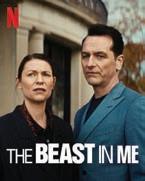





What to watch, read and listen to in November
SELECTIONS BY DAISY DOW
PEACOCK All Her Fault (mystery)
When Marissa Irvine (Sarah Snook) drops her son, Milo, at a new friend’s home, she gets a few precious hours to herself. Her peaceful afternoon soon turns into a waking nightmare when she goes to pick him up. A strange woman claiming to be the mother tells Marissa she has no knowledge of her son. Marissa embarks on a desperate mission to find Milo; all the while, lies from naysayers try to get her off course. Release date: Nov. 2
APPLE TV+ Pluribus (science fiction)
Imagine if everyone around you didn’t just seem happy but was chemically made to be that way. That’s the reality for Carol Sturka (Rhea Seehorn), a novelist who finds herself in a world that feels like something out of a science fiction book. While Carol’s contempt of the world around her grows, a series of odd notes around her home makes her think she’s not the only one sick of the way things are. Release date: Nov. 7
NETFLIX The Beast In Me (thriller)
Aggie Wiggs (Claire Danes) cannot get back into her old routines, following the death of her son. When a new neighbor moves in (Matthew Rhys), her writer's instincts kick in as she notices odd discrepancies of how he presents himself and how he truly is. Aggie begins to investigate Nile’s role in the disappearance of his wife and soon finds herself a little closer to danger that she bargained for. Release date: Nov. 13
NBC, PEACOCK Macy's Thanksgiving Day Parade (live parade)
For decades the Macy's Thanksgiving Day Parade has been one of the nation's most anticipated and watched holiday celebrations. Watch as colossal balloons float above the streets of New York City. Enjoy dazzling floats, and sing along with live performances by popular artists. Start time: 8:30 a.m., Nov. 27 (encore at 2 p.m.)
Wicked: For Good (fantasy) A follow-up to last year’s blockbuster, “Wicked: For Good” brings the audience back into the world of Oz. Now that Elphaba (Cynthia Erivo) has cemented a reputation as the Wicked Witch of the West, her once wholesome relationship with Glinda (Ariana Grande) is strained, leaving the rest of Oz to choose sides. When a teenager from Kansas blows onto the scene, things start to change in unforeseen ways. Release date: Nov. 21
Die, My Love (thriller) At times, Grace (Jennifer Lawrence) and Jackson’s (Robert Pattinson) relationship seems on the up and up. And true of all relationships, they have their rocky patches, right? As Grace reels from postpartum depression that morphs into psychosis, the duo find themselves locked in an inescapable reality, verging on nightmare. Release date: Nov. 7
Jay Kelly (comedy) Movie star Jay Kelly (George Clooney) lives, by all accounts, a dream life. He’s got the career, the fame, the fortune, but something about it all rings hollow when his daughter (Grace Edwards) announces her plans to go to France for a summer rather than spend it with him. Alongside longtime manager Ron (Adam Sandler), Jay takes a look at his life, wondering how moments when he was acting felt so real and why the most real moments always felt like he was playing pretend. Release date: Nov. 14



Cursed Daughters By Oyinkan Brithwaite (fiction) Eniiyi is born to fit into her family’s superstitions about her. She was born the same day her mother’s cousin died, and her uncanny resemblance to the deceased meant she was often considered to be a reincarnation. Other family superstitions bog Eniiyi down, making her think that love is not in the cards for her. When characters and events in her life seem to contradict her family’s superstitions, Eniiyi has to decide whether she will follow the path she’s predestined for or one she wants to make for herself. Release date: Nov. 4
Book of Lives By Margaret Atwood (nonfiction) The author of “The Handmaid’s Tale” and “The Testaments,” Margaret Atwood is known for her provocative fiction writing. But to be in the headspace to create such poignant worlds for readers to enter, Atwood often put herself in new spaces, tense political situations and quiet retreats. Sharing tales of her upbringing in Canada and later-in-life ventures in Germany, Atwood’s memoir shines a light on how she came to be the writer she is today.
Release date: Nov. 4
Bus No. 7 By Mary J. Nestor (local) Chance coincides with fate on bus No. 7. An innocuous misplaced phone leads to a thrilling mystery tying together a hospital orderly, ambitious intern and mischievous cat. Loose ends become entangled in this hard-to-put-down mystery. Release date: Out now
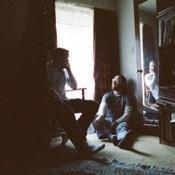



















































WHEN ROY CHIULLI TRADED BOSTON WINTERS FOR ISLAND LIFE, HE DIDN’T SLOW DOWN. HE SIMPLY REDIRECTED HIS ENERGY TOWARD SERVING OTHERS
The Lowcountry thrives, thanks to countless volunteers whose efforts often go unnoticed. These unsung heroes are the driving force behind local nonprofits, making a difference in the lives of many. Each month we’ll feature one of these inspiring individuals to highlight their contributions and raise awareness for the organizations they support. Know someone deserving of recognition? Email info@wearelocallife.com, and help us honor the heroes among us.
STORY BY SHEILA PAZ
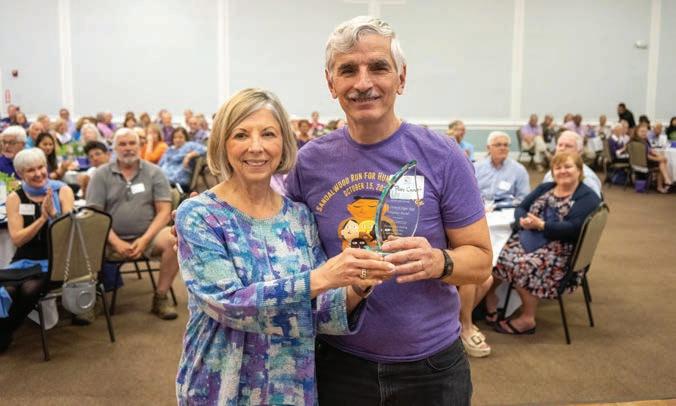
FROM PROPOSALS TO PURPOSE Roy’s gift for writing has made a lasting impact. His efforts earned him the 2023 Volunteer of the Year honor at Volunteers in Medicine Hilton Head Island for helping secure more than $1.1 million in funding.
When Roy and Joan Chiulli packed up their life in Boston to escape the long winters, they thought Florida might be the answer. But after a few weeks surrounded by concrete and crowds, they knew it wasn’t for them. A detour to Hilton Head Island, inspired by passages in Pat Conroy’s novels, changed everything. Within 20 minutes of arriving, they knew they’d found home.
By 2015, with their youngest child off to college, the couple traded city streets for live oaks and salty air. Roy kept working remotely for an aerospace company, writing proposals for Air Force contracts. Once he retired, those same skills found a new purpose, helping others.
Having volunteered at a food pantry back in Boston, Roy searched for something similar on Hilton Head and found Sandalwood Community Food Pantry. His grant-writing expertise quickly caught the eye of Nannette Pierson, the executive director. Before long he was helping Sandalwood secure critical funding and lending his talents to other nonprofits. Today his volunteer résumé includes eight local organizations, and counting.
One of his favorite roles is with Programs for Exceptional People (PEP), a nonprofit serving adults with intellectual and developmental disabilities. Every Friday morning Roy reads aloud to small groups at PEP. The stories often spark lively conversations about life, books and, sometimes, their dogs.
Roy also assists Executive Director Nancy Sulek with grant proposals for the organization’s key initiatives, including its literacy, music, exercise and transportation programs. Since 2022 his work has helped PEP raise roughly $500,000, including a recent grant from the Community Foundation of the Lowcountry, to purchase a new van for members.
It’s not just his writing that makes an impact. “Most volunteers come for their class and leave,” Sulek said. “Roy stays all day. He’s there from 9 to 2:30, connecting with everyone.”
Roy’s dedication hasn’t gone unnoticed. In 2023 Volunteers in Medicine Hilton Head Island named him Volunteer of the Year for helping the clinic secure more than $1.1 million in funding.
“I never imagined I’d be busier in retirement than when I was working,” Roy said, with a laugh. “But the work feels more meaningful now. These are neighbors helping neighbors.”
At Sandalwood alone, his grants have brought in about $600,000 in the past three years, money that goes directly to feeding local families in need.
Whether he’s drafting proposals, reading to friends at PEP, or stocking shelves at Sandalwood, Roy shows what a life of service can look like in the Lowcountry: full of purpose, community and heart.
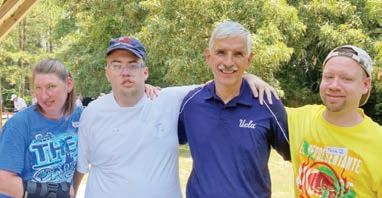
TIME WELL SPENT Every Friday Roy spends the day at Programs for Exceptional People, reading and connecting with clients who look forward to his visits. Most volunteers assist for one class, but Roy stays from 9 a.m. to 2:30 p.m.
Programs for Exceptional People (PEP) is a local nonprofit devoted to helping Lowcountry adults with developmental, physical and intellectual disabilities live fuller, more independent lives. Weekday programs blend literacy, art, music, exercise, cooking, STEM and job training, all designed to build confidence, skills and friendships. The organization also provides much-needed respite for caregivers, giving families time to work or recharge while their loved ones are supported, active and engaged. To learn more about volunteering or donating, visit pephhi.org





adjective. lo·cal | lō-kəl
1: characterized by or relating to position in space: having a definite spatial form or location 2: of, relating to, or characteristic of a particular place: not general or widespread: of, relating to, or applicable to part of a whole 3: primarily serving the needs of a particular limited district of a public conveyance: making all the stops on a route
Local astrophotographer Bill Gwynne brings the universe a little closer, one stargaze at a time
STORY BY BECCA EDWARDS
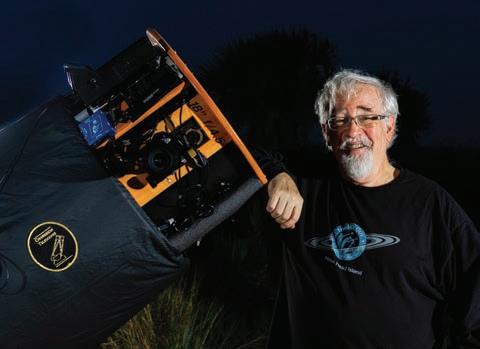
LOCAL SINCE 2015 Bill Gwynne (aka Bill the Sky Guy) leads stargazing sessions every Monday at Marriott SurfWatch and every Wednesday at Marriott Grande Ocean. For a more personal experience, he offers private viewings through his powerful 18-inch telescope. He also shares tips, techniques and advice for budding astronomers on his website, billtheskyguy.com.
bBill Gwynne has a zest for all things celestial, especially astrophotography. “It is very complicated and time-consuming to do well, but watching the image come to life makes me feel like I’ve somehow touched the universe,” Gwynne said. “It gives me a sense of my place in the cosmos.” Local since 2015, Gwynne moved to the Lowcountry from Cincinnati for a new adventure and the area’s beauty and quiet
grace. Now he provides adventure, beauty and grace to all those who stargaze with him.
Q: How did your fascination with stargazing begin? A: I’m a child of the ‘60s. It wasn’t hard to get excited about the Apollo program and the moon landing. So it was natural to want a telescope to explore space, and my folks bought me one from Sears.
Q: How has your passion for astronomy grown over the years? A: As I got older, I had more disposable income and was able to buy larger and better telescopes. A bigger scope gathers more light and allows you to see both fainter objects and with more clarity. I now own six scopes, ranging in diameter from two inches to 18 inches.
Q: How can people stargaze with you?
A: I do two stargazes a week for the Marriott Vacation Club timeshare network. We look at the moon and planets, and also star clusters, galaxies and nebulae, as well as a couple of notable supernova remnants. I have a good mental catalog of things that are fun to look at in a variety of observing conditions, from bright moonlight to dark skies, for adults or kids. The stargazes are ostensibly for Marriott guests only, but I’m available to do private stargazes with my “BAT” (big astronomical telescope) by appointment.
Q: As a music producer, do you think there
is some correlation between reading music and reading the night sky? A: Being detailoriented serves me well in tracking down and photographing an object in the sky for eight hours or more, or choosing the proper microphone and placing it in the perfect spot to record an instrument, or navigating through a complex 40-track recording to get it down to a final stereo mix that people can play and enjoy. My band, Tower of Funk and the Choosy Mothers Horns, is an example of a complicated music mixing project I’ve done recently.
Q: Why do you think people are drawn to astronomy? A: Because it deals with such large, expansive concepts, astronomy engages our natural senses of wonder and curiosity while also satisfying our innate desire to learn and explore. When you come to some kind of understanding of just how immense the universe actually is. The Milky Way galaxy consists of hundreds of billions of stars and is only one galaxy among billions
Q: If someone wanted to get into astronomy, what advice would you give?
A: You can start by getting one of those phone apps like SkySafari or StarMap and teaching yourself to navigate the sky. Start with what you know, and branch out from there. A good set of astronomical binoculars on a tripod is a great way to get started. LL

















STORY BY BAILEY GILLIAM
The Lowcountry never sits still, and neither do its businesses. Each month brings fresh reasons to shop local, discover new favorites and cheer on the people shaping our community. Here’s the scoop on what’s buzzing now and what’s about to make waves.
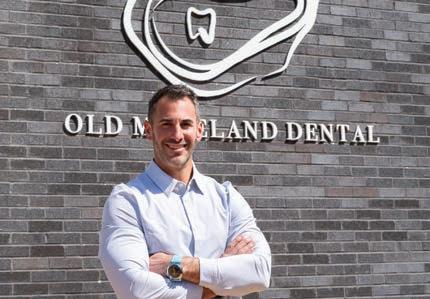
MarshWiggle Knitting
Habersham Marketplace, Beaufort
If yarn and needles make you feel at home, MarshWiggle Knitting is your new happy place. Tucked into Habersham Marketplace, this shop stocks natural fibers, tools and patterns for every level of maker. It is also a gathering spot where knitters and crocheters can swap tips, join classes or simply sit and stitch together.

Fusion Audio + Video Persimmon Street, Bluffton
Fusion Audio + Video brings custom sound, lighting and home theater systems to Bluffton. Think porch speakers for a Saturday cookout, lighting that sets the mood at dinner or a movie room that rivals the cinema. Its team handles the details so you can just hit "play."
Old Moreland Dental New Riverside Village
Dr. Jeffrey Solomon opened Old Moreland Dental with one goal: to make the dentist’s chair feel a little less intimidating. His boutique practice focuses on cosmetic and comprehensive care, using the latest technology in a calm, spa-like setting. From a full smile design to a regular checkup, the experience is meant to be as comfortable as it is thorough.

OsteoStrong Bluffton Pinellas Drive, Bluffton
For anyone looking to move better and feel stronger, OsteoStrong just opened in Bluffton. The wellness center uses short, guided sessions on specialized equipment to help improve bone density, muscle strength, balance and joint health. The best part is that it takes less than 15 minutes a week.


New Riverside Barn & Lawn
Riverside Barn Park, Bluffton
Booking now for 2026, the New Riverside Barn & Lawn will open in February as Bluffton’s newest venue for weddings and events. The space includes a 200-guest barn, a wide lawn, music pavilion, fire pit courtyard and wagonwheel chandeliers. Add in modern touches like Wi-Fi, professional lighting and a caterer’s kitchen, and you have a setting built for celebrations both big and small.
Bridge Street, Old Town Bluffton

Set to open in winter 2026, The Bluffton Bookshop will add an independent bookstore to Old Town. Just steps from the May River, it promises shelves of carefully chosen titles, a cozy spot to linger under the live oaks and a space where readers of all ages can connect.
The Promenade, Bluffton
Opening Nov. 6, the owners of Currents and S.M. Bradford Co. are debuting a new boutique that brings Lilly Pulitzer’s iconic prints, breezy silhouettes and resort-inspired style to the heart of Old Town. It promises to be a must-visit destination for fashion lovers looking to brighten their wardrobes with timeless, tropical elegance.




















STORY BY AUDREY GEIB

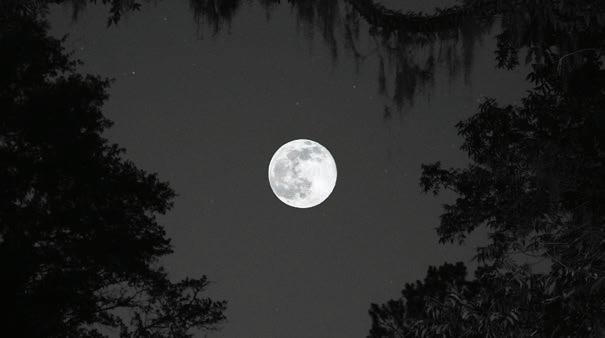
oOn nights when the full moon climbs above the salt marsh, the Lowcountry feels different. Silver light dances over tidal creeks, Spanish moss glimmers like tinsel, and familiar whispers return. Teachers brace for restless classrooms. Emergency responders swap stories of busy nights. Ghost-tour guides swear the streets stir with unusual energy. Folklore insists that the moon can tug at our moods just as it pulls the tides.
The belief isn’t new. In fact, it’s etched into our language: “lunatic” comes from luna, Latin for “moon,” and once meant “moonstruck.” In medieval Europe, the moon was thought to cause periodic insanity. Ancient physicians linked epilepsy to lunar phases, and myths of werewolves flourished. Even today the lore lingers.
“I think this has been a common concept and sort of an urban legend in a lot of ways,” said Dr. Gabriela Farkas, a psychiatrist on Hilton Head Island.
When researchers dig into the data — crime reports, hospital admissions, birth records — the results are consistently inconclusive. No uptick in emergencies. No surge in births. No wave of lunacy.
So why do we still believe?

Farkas points to confirmation bias, a psychological pattern that makes us notice what we expect to see.
“When you have a hammer, you see everything as a nail,” she explained. “If you have this idea that it’s a full moon and people get crazy, then if you’re working in an emergency department, you’re going to think, ‘Oh my God, we’re so busy.’ When, in fact, you may have been just as busy five days ago, but you didn’t attribute it to any external circumstance.”
It’s a trap of perception. A scattered morning feels more scattered if you’ve already blamed it on the moon. A classroom seems more unruly when you arrive expecting chaos. A hectic night in the ER feels like proof of lunar lunacy because you were looking for it.
Confirmation bias is powerful because it feeds itself.
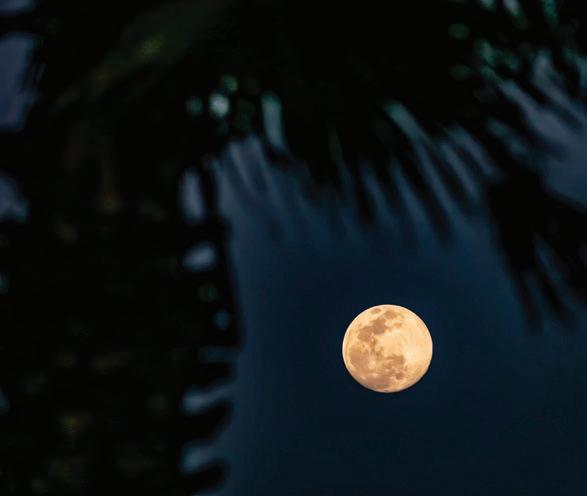
BORROWED LIGHT
The moon has no light of its own. What we see is sunlight reflecting off its surface, and only about 7 percent of that light bounces back to Earth.
“If the person believes that the full moon will impact them, then it’s probably going to,” Farkas said. “Whereas someone else, who doesn’t even know it’s a full moon, is obviously not going to make that connection.”

A
when the moon’s orbit brings it closer to Earth at the same time it is full. To the eye, it looks about 14 percent larger and 30 percent brighter.
Still, the moon is not entirely powerless. Its most direct influence comes down to light.
“I always notice when it’s a full moon because there’s more light coming into my room in the middle of the night,” Farkas said. “You’re supposed to have this dark room, but when the moon is full and there are no clouds, there’s more light outside that may show up in your bedroom, so your sleep may be a little lighter or a little more restless.”
Modern studies support her explanation. A 2013 paper in “Current Biology” found participants slept an average of 20 minutes less during full moons. A 2014 followup found a similar 25-minute reduction. That disruption doesn’t spark lunacy but can lead to subtle shifts: shorter tempers, unsettled moods, an edge that makes the world feel a little stranger.
Generations ago, before electricity, the moon’s light mattered more. Farmers and fishermen lived by its rhythm. Families went to bed when the fire burned out. So a bright moonlit night meant more activity, and the fatigue that followed could easily be mistaken for a shift in temperament.
“When we lived closer to nature, we probably had a much higher impact from these things on our bodies,” Farkas said. “These days we can easily override them with artificial sources of light. I think we’ve sort of lost this connection to nature, in general.”
In that sense, lunar lunacy may be a remnant of a more elemental life. While artificial light dulls the moon’s physiological impact, its cultural and symbolic power remains intact.
If science doesn’t support the myth, why does it persist?
Perhaps because it offers a story, a way to make sense of restless nights, rowdy students or a stretch of bad luck. Perhaps because it connects us, however loosely, to a time when the moon truly did govern human rhythm. Or perhaps because the full moon is simply too captivating not to believe in.
Belief, like the moon itself, has a pull of its own. Here in the Lowcountry it’s hard not to look up at that glowing disc rising over the marsh and feel, at least for a moment, a little moonstruck. LL
Across cultures and centuries, people have given each month’s full moon its own character. Many of the names we use today come from old European and Native American traditions, tied to the rhythms of farming, hunting and weather. Here are a few you’ll see shining over the Lowcountry each year:
Wolf Moon (January): Named for the howls heard in midwinter nights.
Snow Moon (February): A nod to the coldest, snowiest time of year.
Worm Moon (March): Marks the thaw when earthworms reappear.
Pink Moon (April): Not actually pink, but linked to spring’s wildflowers.
Flower Moon (May): A celebration of peak blooming season.
Strawberry Moon (June): Coincides with the berry harvest.
Buck Moon (July): When young deer begin growing new antlers.
Sturgeon Moon (August): Prime time for catching the big fish.
Harvest Moon (September): Extra bright, helping farmers work late into the night.
Hunter’s Moon (October): Lights the way for autumn hunts.
Beaver Moon (November): Signals the time to set traps before swamps freeze.
Cold Moon (December): Marks the longest nights of the year.

CRATERS On July 20, 1969, just after Apollo 11 touched down, astronaut Buzz Aldrin took communion on the lunar surface. He poured wine, broke bread and read scripture, turning the first moon landing into both a landmark of science and a moment of quiet human ritual.


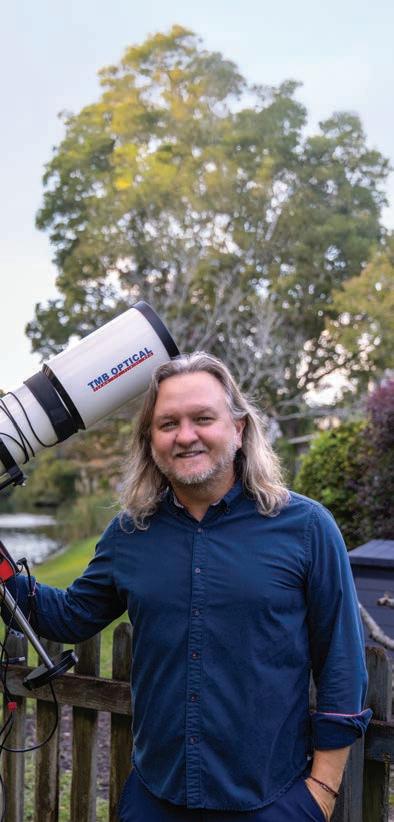





From backyards to blue water, these three locals follow the light above
tSTORY BY BARRY KAUFMAN PHOTOGRAPHY BY LISA STAFF
There are few things that have inspired mankind to dream more than the stars. Before our scientific knowledge gave them form, helping us understand that these twinkling lights are actually distant suns, only visible when our own recedes, they were simply magic. Tossed across the heavens, impossibly bright against the backdrop of night, they were our first reminders that we are not the sum total of the universe. There is more beyond your reckoning, these stars promised.
As we advanced, we followed these stars to voyage outward beyond our own shores. We studied them and discovered the heavenly patterns each follows across the years. We would pierce the veil of our own planet’s gravity, allowing us to come face to face with their celestial designs.
They have watched over us as we built civilization. And while our electric lights may dull their shine, they will always be there. They will always fascinate us. And as they watch over us, we now introduce three locals who are always watching back.




bThis former Bluffton resident uses astrophotography to capture the cosmos from his Mount
Before a star can shine, it must be formed. And there are few greater wonders in the heavens than the birth of a star, gases and dust that swirl through space in vast, colorful forms, coalescing in clouds, pillars and spirals before they collapse into creation.
Reid McCall isn’t just fascinated by these distant miracles. He’s produced photos that let him share that fascination.
“When you’re looking at the Triangulum Galaxy, it’s 60 thousand light-years wide and 3 million light-years away. The light photons hitting my camera took 3 million years to get here”, he said. “When you tell people that, their brain just shuts down. They just can’t understand that size. I’ve had people say, ‘that’s not possible.’”
It is possible, and McCall has the photos to prove it. A dedicated hobbyist, he has been capturing images of distant nebulae for decades, using sophisticated photographic equipment and a healthy dose of patience.
“The picture of the Orion Nebula was my most complex ever. It required over 1,000 images stacked together using PixInsight, which is the same software used by some engineers working on the James Webb and Hubble Telescopes. You end up with a picture made up of about two weeks of data,” he said. “It’s almost like I aimed a camera at it and kept the lens open for 50 hours.”
Swapping out different filters to capture the colors of the various gases within a nebula, he will sit outdoors for multiple nights at a stretch, leaving the exposure open anywhere from five seconds to 10 minutes on each shot. The high-tech mount for the camera is aligned with Polaris, making adjustments throughout the night to keep the nebula in frame.
His photos bring these invisible artworks into focus: dazzling shots of nebulae, galaxies, stars and clusters shared on his Instagram (@images.of.space). Shooting from the
WESTERN VEIL NEBULA, NGC 6960
Size: 35 ly Distance: 2,400 ly
Taken: September 2023 Telescope: TMB 92ss
The Veil Nebula is supernova remnant from a star that exploded around 10,000 years ago. Like galactic 4th of July fireworks, this target gets a lot of wows. The red and blue hues are made up of light-years-long streams of hydrogen and oxygen gas.





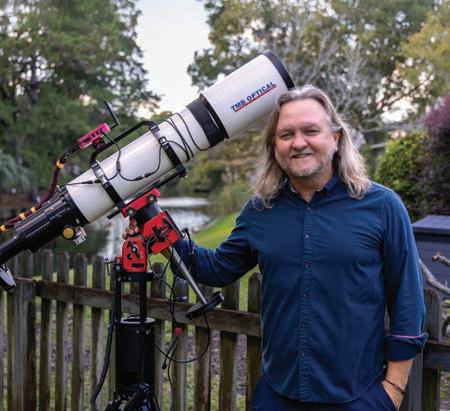


CAPTURING THE INFINITE From his backyard in Mount Pleasant, former Bluffton resident and marketing executive Reid McCall captures distant galaxies, nebulae and star clusters with stunning precision. By night he channels his creativity into astrophotography, using advanced tools like PixInsight and narrow-band filters to reveal cosmic details often hidden by coastal light pollution. Through his Images of Space Instagram page and online astronomy communities, he hopes to inspire curiosity and remind others that wonder is always overhead.
backyard of his Mount Pleasant home, with occasional forays west for clear shots out in the desert, this “fun little hobby,” as he calls it, began in 2001, when he bought his first scope and camera.
“I was super disappointed in what came out. I was just getting blurry blobs, and I soon realized the tech to get the photos I wanted was too expensive. So I just did visual astronomy for years,” he said. Fortunately, a client heard about his hobby and offered to sell him some equipment. Even though what he was offering consisted of rare scopes and mounts that go for thousands of dollars, the client was just looking to buy a guitar. A deal was struck, and McCall’s passion for astrophotography began in earnest.
“Today the cost of everything has come way down. What would have cost me tens of thousands of dollars in 2001, you can do now for a few grand. It’s a lot more attainable,” he said.
But it’s worth it. Not just for the photos that McCall is able to capture, but for the sheer inspiration those images impart.

Call today to schedule your appointment to ensure you are up to
We can help make sure you are ending the year on a healthy note.

Main Street Medical is a premier urgent care and family practice serving individuals and families in Hilton Head, South Carolina. Led by Joel Johnson III, MD, the team aims to treat all their patients with dignity and compassion by providing comprehensive medical care services that promote a healthy community. It’s time to check your Hemoglobin



“We are thrilled to be marking this milestone anniversary in a community that we love to serve and a place we love to call home. We look forward to many more decades of providing financial services to our neighbors and friends.”
“When I look at my pictures, after I get done with the color and technical part of it, I just stare at it and say, 'I can’t believe it. I just took a picture of something older than any nation, religion or anything on Earth that we can relate to.' For me it’s very relaxing. All these problems we think we have, we’re just a blip. We’re just starting to find our place in this galaxy and in this universe. The fact that we even exist at all is a wonderful miracle. Every human is part of this grand celestial dance. The elements that make up our bodies were forged inside stars billions of years ago. We are literally made of stardust, and we can go out at night and gaze back at the starlight. We’re nature standing up and looking at itself.”
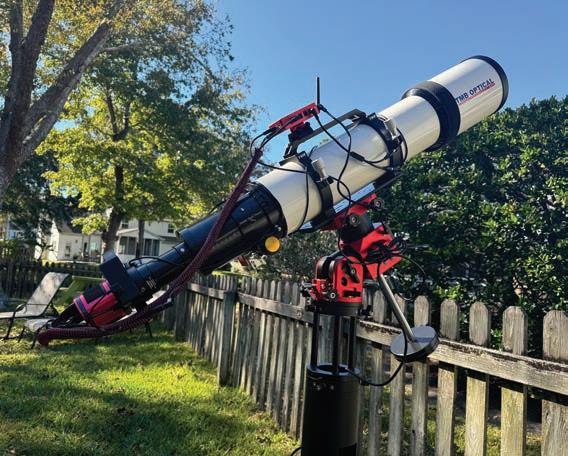
tThe extraordinary photos that Reid McCall takes of far-off galaxies and nebulae require more than just a camera and patience. Just because you’re gazing at the stars doesn’t mean you’re immune to the effects of Earth, and he has learned over the years the best way to work with local conditions to capture the best image.
“You’re always going to get better data if you shoot in the desert, but technically speaking you could shoot a photo of a galaxy in downtown New York,” he said.
That’s not to say it wouldn’t be difficult. Even shooting in Mount Pleasant where he lives, a place that offers far less light pollution than the Big Apple, can be difficult.
“I have trees everywhere, so a lot of it hinges on how long that object will be clear of the trees,” he said. “Here it’s very humid, so in the summer you get a lot of haze that accentuates light pollution. I prefer to shoot in the winter here because the atmosphere is still and clearer.”


Central to our approach is nurturing a trusted relationship with you so each procedure is customized to your unique beauty and well-being, helping to elevate your self-esteem, redefine your body image and provide fresh, elegant and natural-looking results.
Advanced in-office aesthetic procedures and tailored prescription-grade skin care products can enhance or restore your natural beauty without downtime.
Our full array of face, breast and body cosmetic surgeries amplify your outer beauty and empower you from within.
Dr. Harrington works with other board-certified surgeons and specialists to create a plan tailored specifically to your needs and desires.



Board-certified plastic surgeon Dr. Heidi Harrington and the team at Beaufort Memorial are devoted to empowering you through transformative procedures and aesthetic enhancements, focused on renewing confidence and function.
Call 843-707-8020 or scan the QR code to start your journey with Dr. Harrington.



Astrophotographer Reid McCall turns his backyard into a window to the universe
From his backyard in Mount Pleasant, photographer Reid McCall has journeyed farther than most travelers ever could; across light-years, through galaxies and into the birthplaces of stars. Using a pair of telescopes (the TMB 92ss and TMB 130ss) and an extraordinary amount of patience, McCall has spent countless nights capturing deep-space objects from the comfort of his own yard.
GREAT ORION NEBULA, MESSIER 42
Size: 24 ly Distance: 1,344 ly
Taken: January 2025
Telescope: TMB 130ss
This is the most complex image I’ve produced, both in acquisition and processing. A total of 1,170 individual images (subs) with exposures ranging from five seconds to three minutes were captured from my backyard over two weeks. I spent another two weeks processing the subs into this final image.


TRIANGULUM GALAXY, MESSIER 33
Size: 60,000 ly Distance: 3,000,000 ly
Taken: December 2024 Telescope: TMB 130ss
Photographing another galaxy is always awe-inspiring. The pink and red regions are immense nebulae, much like the targets we capture within our own galaxy. M33 is the third-largest galaxy in our Local Group, behind the Milky Way and Andromeda.

BUBBLE NEBULA, NGC 7635
Size: 7 ly Distance: 7,100 ly
Taken: October 2024 Telescope: TMB 130ss
This image is the result of 50 hours of exposures, needed to tease out faint details in the bubble’s delicate structure. One of the most striking nebulae in the sky, the distinctive “bubble” is formed by the powerful stellar winds of a massive central star.



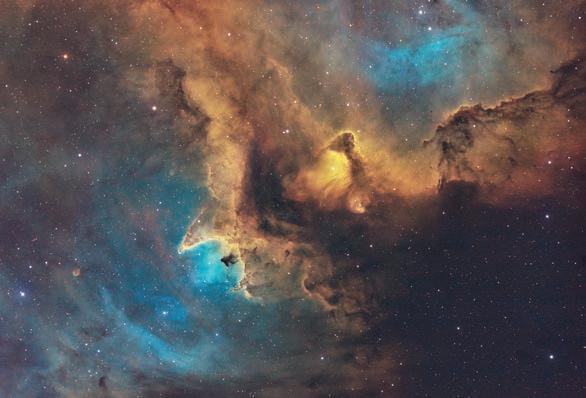
SOUL NEBULA, IC 1848
Size: 125 ly Distance: 7,000 ly
Taken: October 2024 Telescopes: TMB 92ss and TMB 130ss
A favorite target to shoot every fall, the Soul Nebula’s intricate dust pillars and active star-forming regions become sharper with each year’s additional data, leading to longer and more detailed integrations over time.
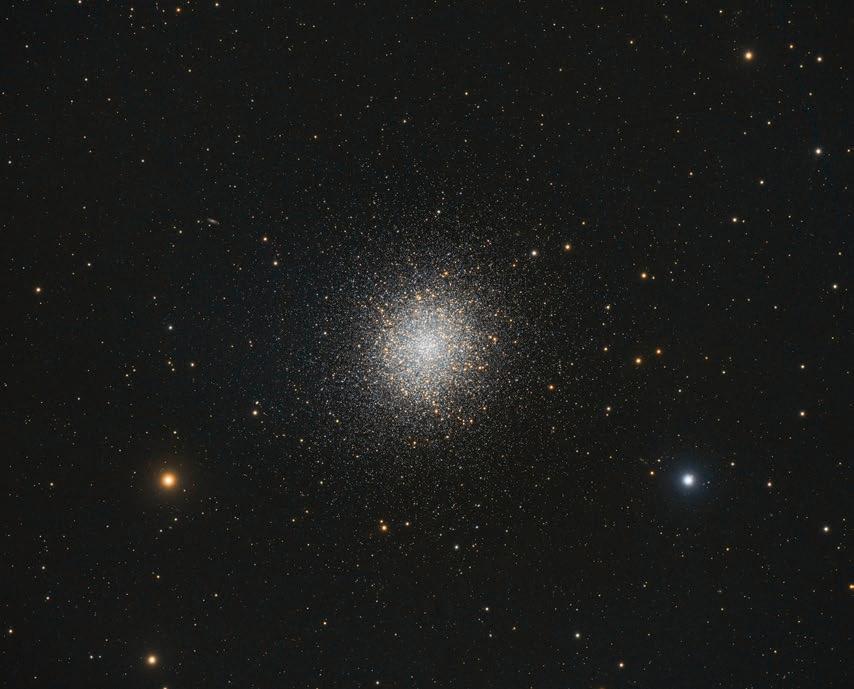

Size: 20 ly Distance: 2,400 ly Taken: October 2024
Telescope: TMB 130ss
The Elephant Trunk Nebula contains several fascinating star-forming regions, notably the two stars in the circular cavity near the top whose stellar winds have cleared the surrounding dust. The bright outer rim is illuminated and ionized by the massive star HD 206267, located just east of the nebula.
HERCULES CLUSTER, MESSIER 13
Size: 145 ly Distance: 25,000 ly Taken: September 2024
Telescope: TMB 130ss
It’s fascinating to stare at hundreds of thousands of stars concentrated in one region just 145 light-years across. Imagine what your sky might look like if you lived on a planet orbiting one of these suns. Globular clusters are among the oldest features of the universe, dating back 8 to 13 billion years.
















Novant Health is where advanced surgical expertise meets compassionate local care. Our surgeons use leading-edge robotic technology to deliver faster recovery times and better outcomes — from joint and back pain to urological concerns and general surgery needs. With world-class surgical teams at both Novant Health Hilton Head Medical Center and Novant Health Coastal Carolina Medical Center, getting the expert surgical care you need has never been easier.


Size: 15 ly
Distance: 7,500 ly
Taken: October 2023
Telescope: TMB 92ss
Melotte 15 is a unique open star cluster located within the Heart Nebula, companion to the Soul Nebula. In this and similar color-mapped images, the cyan-blue areas represent oxygen gas, while the orange and yellow regions correspond to hydrogen and sulfur gases.

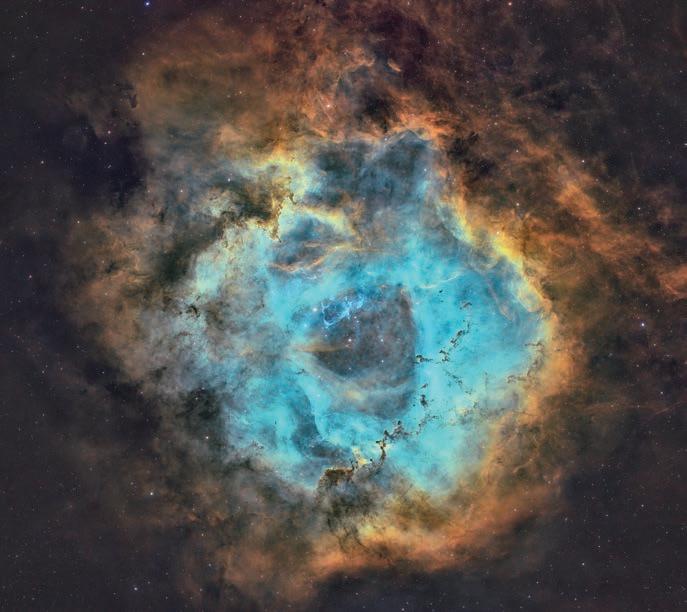
ROSETTE NEBULA, NGC 2237
Size: 130 ly Distance: 5,200 ly Taken: September 2024 Telescope: TMB 130ss
The Rosette is special to me because it was the first target I used to learn PixInsight, the software I still use to process astrophotography images. I’ll never forget the first time I saw it appear on my computer screen — my jaw dropped, realizing it was possible to capture something so incredible from a backyard.
DUMBBELL NEBULA, MESSIER 27
Size: 1.44 ly, Distance: 1,360 ly Taken: September 2024 Telescope: TMB 130ss
The Dumbbell Nebula formed during the final stages of a Sun-like star’s life, when it expelled its outer layers after running out of fuel. The star expanded into a red giant before its core collapsed, ejecting its atmosphere into space. The resulting cloud glows with light from the remaining white dwarf at its center.

















































This aerospace engineer finds art and advocacy in the Lowcountry’s night skies
wWhen you’re taking the kind of ethereally gorgeous nightscape photos that Zach Grether takes, you approach the shot with a mix of rightbrain creativity and left-brain technical prowess. You take stock of your camera’s settings and accessories, perfectly calibrating each to the amount of light and the desired shot. You cast your eyes upward, pairing the composition of the surrounding landscape with whatever hidden details may reveal themselves in the sky when you’re done.
Or, as he puts it simply:
“There's a lot of just positioning yourself in the universe and figuring out what the sky is going to look like,” he said.
That zen-like simplicity masks an immensely deep level of photographic knowledge. An aerospace engineer by trade, he still looks at his photography as more of an enriching hobby than anything else, but with the sort of technical perspective only an engineer could have.
“My wife got me my first camera when we were living out west, just your basic starter kit from Costco, but the next thing I knew, I was buying lenses left and right and absorbing everything I could. As an engineer, I really needed to understand the manual side of cameras, and it just became a beast. I couldn't stop eating,” he said. His growing photographic obsession soon found its muse. “As an aerospace engineer, and just a kid that loved space in general, I was kind of drawn to the stars out west. It just takes an hour or so to get outside of the lights where you can start to really see what's out there.”
Practicing his art along forgotten backroads that connect empty towns near the New MexicoArizona border was made easier by the famous “dark zones” in the area where light pollution from nearby cities is essentially nonexistent.
“You pull over and turn the car off, and you let all the lights settle and give your eyes a few minutes to kind of adjust, and get out. You look up, and it's just like, it's indescribable,” he said. “I am definitely a big advocate for DarkSky International and what they do. I really wish there



were more dark sky areas. There's all the stuff that, for some reason, we feel like we need to light up. It really does affect bird migration and turtles and everything else.”
And it makes it far more difficult to take the photos Zach takes. But then, the engineer in him seems to relish the challenge. One of his most famous shots, which wound up going viral when SpaceX got wind of it, actually captured one of the aerospace giant’s rockets streaking across the Hunting Island sky and through the silhouette of a beached tree’s branches. Writing about it for PetaPixel, Grether went deep into the process of capturing it. Gathering data for an ISO invariance test, the ISO 6400 on his old Sony a7III would look different than it would on his newer Canon 5D Mark II. Setting the time-lapse app to shoot 30 one-second exposures each. Then, noticing the streak of the rocket across the sky, improvising to capture a five-minute time lapse of its arc through the heavens.
“There’s just being out there and just getting lucky a lot of times, but there’s a lot of work involved,” he said. “There was a Reddit comment on a story about that shot where someone said, ‘Thank God someone knew what they were doing when they were out there.’ Thank you. I didn't respond to it, but that’s the best comment I've ever gotten.”
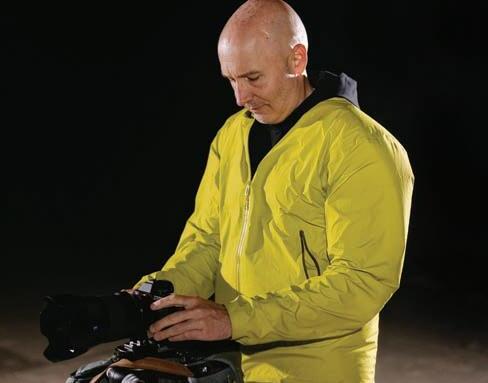




DARKNESS Zach Grether is an aerospace engineer by day and a nightscape and fine-art landscape photographer by night. He and his family live in Margaritaville and keep a condo in Shipyard. His Milky Way and coastal night-sky images have appeared in National Geographic and international contests. Through his website (zgrethphoto. com), he’s blended artistry with
using exhibitions and education to raise awareness of










Making
Our


tThere is far more technical wizardry that goes into Zach Grether’s awe-inspiring photos of the night sky than we could possibly fit into one story. But he’s happy to at least share what goes into each photo.
“It's a combination of things. It's definitely a problem that you have to solve. You've got to know what kind of star you want. You want to show star trails? Do you just want to show points of light? Do you want to show the Milky Way? What time of year is it? Because that’s going to decide where the Milky Way is in the sky, or whether or not you have the moon washing the sky out. And then as a nightscape photographer, you need to have some sort of landscape to incorporate into the image. So just getting somewhere unique and having that line of sight with the sky, and having everything lined up correctly is the second part of it, and that's just kind of creating the image in your head,” he said. “The execution is definitely the harder part. It's a combination of figuring out how to get everything in focus properly. How do you manage your gear’s capabilities? How do you make sure that the stars are stars and not trails? There’s quite a bit to it. But once you actually understand the problems that you have and how the camera works, the components that are involved, it becomes really easy. Especially, once you start doing it a couple of times.”
There’s more to it, but those interested in learning more can find the story he wrote about his SpaceX photo on PetaPixel.









We invite you to discover the robust lifestyle at Hampton Hall.










An engineer’s eye meets an artist’s soul in these luminous portraits of the night sky

Canyon Lake, Arizona
My first major nightscape project was a 12-image panorama and actually my second attempt at capturing something unique at the lake. I had gone out there the previous month and knew there was something special. I just needed to step back about 20 feet to capture more of it.
zZach Grether has always been drawn to the night. As an aerospace engineer, it’s no surprise that his curiosity about what lies beyond our atmosphere extends naturally to the stars themselves. He received his first DSLR camera as a birthday gift in 2011, and within four years his night-scape photography had earned national attention. His work has been featured by the Oprah Winfrey Network and The SunMagazine, and one of his images was named among National Geographic’s Best Night Sky Pictures of 2013. Realizing that most Americans live in light-polluted areas where the Milky Way is often invisible, Grether began capturing the night skies around his Arizona home. The resulting images from his time out west reveal a mastery of light, patience and perspective, proving that even from Earth, the cosmos is within reach.



SMART SERVICES & SPECIALISTS LOCATED THROUGHOUT THE REGION.


Residents of Southeast Georgia and the South Carolina lowcountry should feel comfort in knowing they have access to the most advanced oncology care in the region.
St. Joseph’s/Candler offers innovative and customized treatment plans at the nationally recognized Nancy N. and J.C. Lewis Cancer & Research Pavilion in Savannah, Bluffton, and throughout a network that spans a 33-county area.
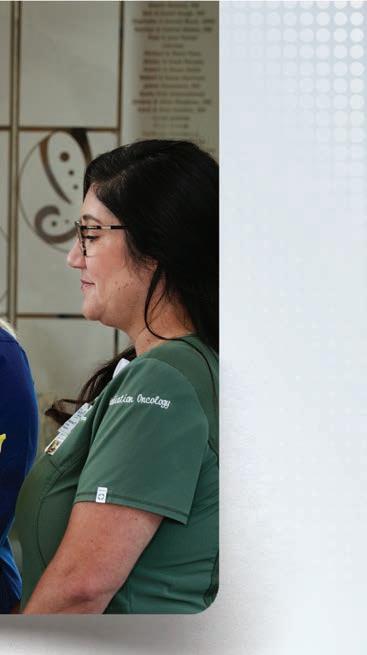

At these facilities, patients and their families will find committed medical, surgical, and radiation oncologists as well as other specialists who are exceptionally skilled at the diagnosis and treatment of cancer. They’ll find physicians who utilize state-of-the-art technology and clinical trials that can help patients beat cancer. There’s no reason to travel; compassionate and comprehensive cancer care is close to home.



Roosevelt Lake, Arizona
I’ve always had an affinity for images with strong leading lines such as roads, paths and bridges. I had been out shooting all night, driving farther and farther away from the Phoenix city lights, stopping to photograph something, then driving some more. Just as I was about to turn around, I saw the bridge in the distance and instantly knew what I wanted to do. Luckily, at 3:30 a.m., there was zero traffic, and I was able to time it perfectly.


Magdalena, New Mexico
I had been shooting nightscapes for a few months, practicing my craft, when I had to take a business trip to Albuquerque. I decided to drive through the night and stop in one of the darkest places in the United States to see what I could capture. The interesting part of this night is that it became one of the most active nights for aurora activity in years, with visibility all the way down to where I was. When I saw red in my camera preview, I actually thought my sensor was broken, so I packed up and kept driving. It wasn’t until I got close enough to Albuquerque to regain cell service that I started getting messages asking if I knew about the solar storm.
Salt River Canyon, Arizona
I had been working on improving my light-painting skills when, while driving through the canyon on a photo expedition, I remembered a small derelict shack up on a bluff. I had only seen it briefly from a distance but decided to stop and see what I could create. It ended up being a series of stacked images that brought out different details of an otherwise ordinary little shack. Using just a headlamp, I lightly painted the outside in one image, used higher-intensity orange light to create a candlelit effect inside, and finished with a normal capture of the night sky.










Our Residential Storm Shutters provide year-round protection and timeless style, because safety should always look this good.


This Hilton Head native blends modern seamanship with a centuries-old method written in the stars
lLast month Roy Prescott Jr. found himself 100 miles offshore at the helm of a 38-meter Westport yacht with a massive lightning storm moving in.
“We were trying to make it ashore before it hit, but we wound up right in it. There were huge bolts of lightning striking all around the ship. You drive this boat with a computer screen – it’s very tech-forward – and if we’d been unlucky enough to take a hit, we’d have been grounded,” he said. “That can happen, where you get hit and it works its way off land. If you’re offshore and can’t see land and all of your electronics are out, it isn’t pretty.”
Fortunately, Prescott had one thing going for him. Even if the storm took his GPS, his electronics and all the modern navigational trappings the boat holds, he’d simply need a glance at the night sky to know exactly where he is. One of the few captains who still uses celestial navigation, he has been a dedicated disciple of an art form that’s as old as sailing itself.
A seasoned sailor and native of Hilton Head, his love of the sea would take him offshore in 2013 as he began working on boats up in the Great Lakes. He’s built his career jumping from one boat to the next, from 50-ton passenger yachts up to 1,600ton ships. A few years ago, while serving as first mate on a yacht owned by “someone on the Forbes list,” he was given leave to further his education.
“I ended up securing approval for testing for a 1,600 ton master license, which is a pretty rigorous examination. It was a couple of years of learning navigation, ship stability, domestic and international maritime law, but celestial navigation was my favorite part because I’d heard about it my whole career,” he said. “It’s a lot of trigonometry, to be honest. I never thought I’d have the opportunity to drive multi-million-dollar yachts by being good at math.”



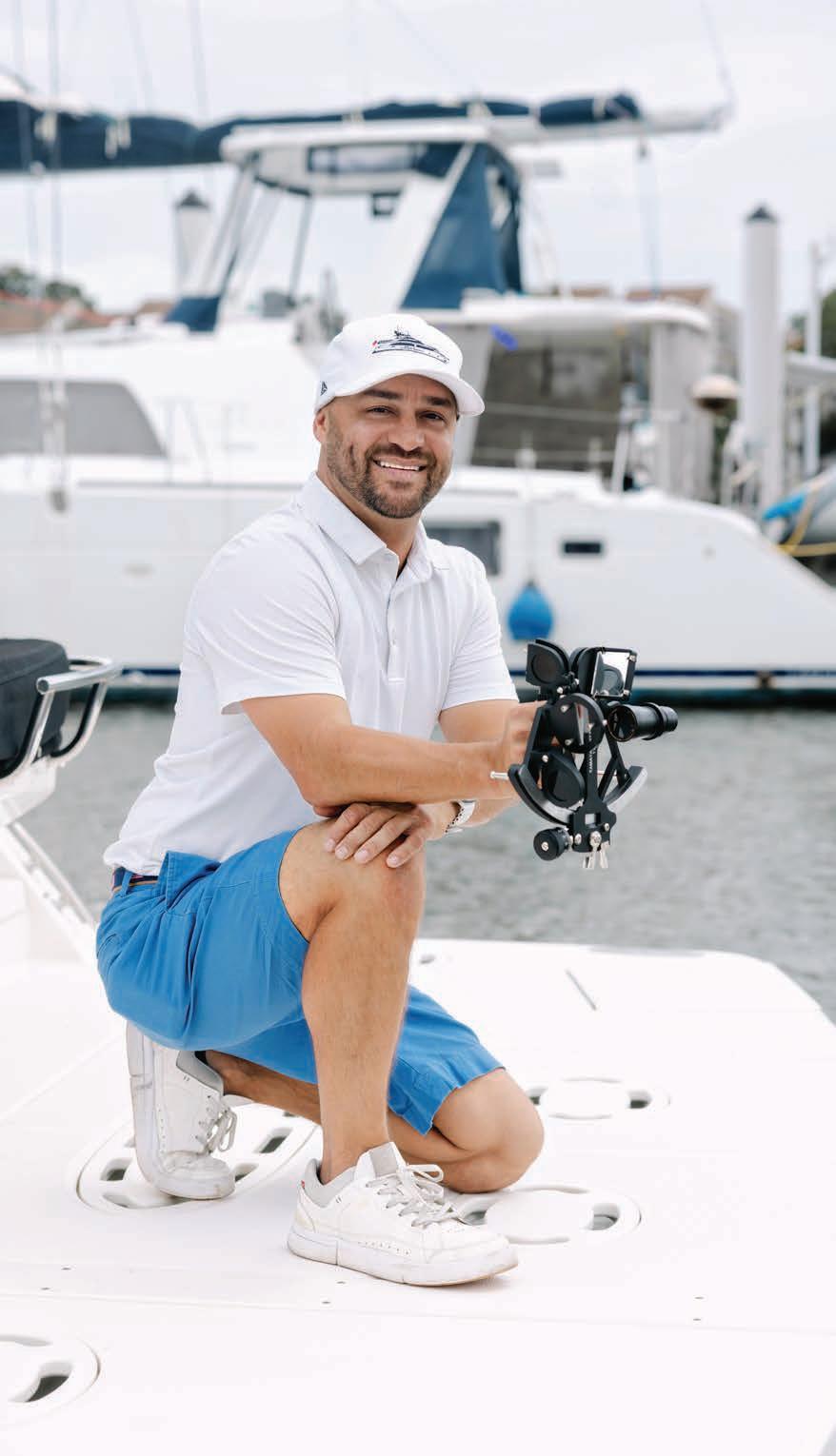
Latching onto a book that he calls his bible, Nathaniel Bowditch's “American Practical Navigator,” he dove into the ancient art of allowing the stars to guide you.
“Bowditch was an early navigator from Salem, Massachusetts. It’s amazing the amount of knowledge in this book,” he said. “Using Bowditch, you can figure out the lines of your position using these graphs and find your distance. That’s my favorite part of using the sextant, just knowing this one tool in my hand can help me figure out wherever I am on Earth.”



a Hilton Head Island native and seasoned yacht captain, is one of the few mariners who still practices celestial navigation, the ancient art of steering by the stars. Though he spent much of his early career unaware of its full complexity, he later mastered the method and now champions its enduring value. With STCW and NMC USCG 1600GT Master credentials, Roy has captained five motor yachts across the Mediterranean, Atlantic, Caribbean, Great Lakes and U.S. coasts.







No one can predict the future - that’s why we have insurance.
As an independent insurance agency, we do the di cult work of finding the best rates and coverages for your specific needs. We want you to spend less time worrying if you’re properly insured and more time enjoying your life. No one can predict the future, but Kinghorn Insurance Agency can make sure it’s protected.







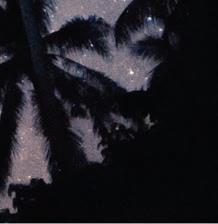




rRoy Prescott Jr. is one of very few captains who can still navigate by the stars. It’s an art form that began with the earliest sailors, and one that came very close to being forgotten.
“The United States Naval Academy had decided at one point cancel celestial studies because it was so outdated. You can use GPS now, and you have all these high-tech systems, right? But someone thankfully realized they were putting all these cadets out into open ocean, and if the satellites get taken down, what happens?” he said. “So they’ve implemented that program again, and it’s taken hold.”
Because of this unique knowledge, he has become an indemand captain with a list of clients he absolutely cannot discuss due to non-disclosure agreements. But you can guess that, whoever they are, they like to take full advantage of their craft.
“People who buy yachts don’t buy them to stay in one place,” he said. “I’ve done the Mediterranean, Spain, Gibraltar, the Canary Islands. I’ve done all the islands in the Caribbean, the west coast of Florida and into the Keys, up the Intracoastal into Cape May. I piloted the second-largest motor yacht to ever transit the Erie Canal. That trip took two weeks.”
He’d tell us more, but legally he can’t.
Experience architecture and home design like never before. Discover the art of design with our all-in-one luxury design firm, serving the Lowcountry with an unwavering commitment to excellence.
“I’m on an NDA right now. That’s part of the job. I wish I could post about the places I go on Facebook, but I’m not allowed,” he said. “I’ll just say that I’m really happy with what I do.” LL
































Where kitchen meets living room and past meets present, this great room in Berkeley Hall is meant for gathering
STORY BY ALEA WILKINS + PHOTOGRAPHY BY MATT HOLMES
wWelcome, one and all, to a room built to be shared. Encompassing the kitchen, living area, dining table and a breakfast nook, this expansive multipurpose room leaves a seat for everyone. Morning cups of coffee brighten with the company of another early riser. Home-cooked meals are savored more when served around a full table. Built to connect, the great room of Jeff and Deb Baron’s home in Berkeley Hall achieves this goal two-fold. Not only do friend groups mingle, but mementos of their previous home in Boston blend with their new roots in the Lowcountry. Connecting past with present, neutrals serve as the perfect background while packing personality of their own. Spacious, modern and full of heart, it’s a great room, indeed.
When designing the space with the team at May Residential, the Barons embraced their new surroundings. Large windows appear on either end of the great room, and 10-foot sliding glass doors lead to a backyard patio that basks in the southern sun. On the inside, furniture sourced from up and down the East Coast speaks to the couple’s history. The dining table, handmade from the wood of a deconstructed Jim Beam rickhouse, brings Boston’s edge to the Palmetto State. Meanwhile, the chandelier overhead comes from just around the corner. Lowcountry Originals in Bluffton carried the sculptural light fixture that depicts feathered palm leaves, an homage to the couple’s new home. These subtle nods allude to their journey without knick-knack clutter, thoughtfully honoring their past while saving space for new memories.
Between the meaningful decor, playful neutrals bring the room together. Curved armchairs add personality with a wood frame wrapped around the back, mirroring the oversized wood beams on the ceiling. The glass coffee table serves as the perfect pedestal for literature and florals, and the cabinetry glows like a trophy case. Standing out from the cream walls, the natural stone fireplace draws attention without distracting from the rest of the room. It beckons the eye to look around but never stray too long — there’s more to explore and enjoy in this great room. Altogether, it resembles a fresh start for the couple down South, but its history fills it with heart. It welcomes guests to come on in and stay awhile. Here, there’s room for everyone.







The Schonbek Amadeus chandelier reigns overhead, scattering light like royal regalia. Its glittering crystal base and golden arms echo the glamour of a fairytale ballroom, while sconces, recessed cans and LED strips ensure flattering illumination at every angle.







STORY BY ALEA WILKINS
In its polished glory the bathroom may be the most regal room in the home. It’s a private kingdom built to unwind, refresh and empower its occupant. After all, it holds the porcelain throne. Designed for comfort of the highest order, this Owners Club at Hilton Head master bathroom by Group 3 Designs surrounds its guests in marble, wood and metallic accents, delivering the royal treatment at every turn.


An arching orchid from Pyramids Gifts & Home Furnishings breathes life into the bathroom. Its elegant shape softens the marble’s crisp lines while maintaining the space’s air of refinement.




Ornate Victorian faucets from Newport Brass gleam against the white backdrop, their decorative curves recalling heirloom finery. Like jewelry for the bath, they’re designed to be admired as much as used.

Classic Brass St. Georges knobs, etched with subtle patterns, add a vintage flourish to the clean cabinetry. The effect nods to Regency-era elegance while keeping the room grounded.

STONE THRONE
Inspired by Renaissance Italy’s Calacatta marble, sweeping stonework climbs the walls to the ceiling, setting the tone of classic opulence. Its natural veining in soft grays and tawny notes commands attention without overwhelming, establishing both grandeur and serenity.

FIT FOR ROYALTY This Owners Club bathroom is a masterclass in balance, where bold marble meets warm wood, shimmering fixtures and refined accents. From the glittering chandelier to the woven tray, every detail is crafted with regal precision, creating a retreat that is as breathtaking as it is serene.


IN trim
FRAMED IN MAJESTY

Custom mirror trim in dual-tone wood enhances the marble’s depth while creating a striking mirroron-mirror effect. When lit by side sconces, the frame glows warmly, adding organic character to the otherwise polished space.


NOBLE NEUTRAL
Cabinets in Benjamin Moore’s Berber White strike a subtle contrast with the marble, their creamy finish pulling together the brass accents and natural stone tones. The result is soothing and spa-like, a reminder that luxury can also invite comfort.

A handwoven Calasio tray from Pyramids Gifts & Home Furnishings corrals perfumes and bath essentials. Its geometric weave introduces tactile contrast against smooth marble, proving that even small details can elevate the everyday.





























STORY BY ALEA WILKINS + IMAGES PROVIDED BY FUSION AUDIO + VIDEO
The Lowcountry is best experienced unplugged, but even the most idyllic locations can be enhanced with touches of technology. Weather-rated televisions take watch parties outside. Multi-room speakers and lighting envelop your living space. Smart cameras protect homes and reassure owners while they’re away, whether they’re across the street or across the globe. But with so many versatile gadgets on the market, deciding which is right for your home can feel like a system overload. Audio/video experts have the answers. For an overview of what an AV professional can do for you, Fusion Audio + Video explains how technology works smarter, not harder, so you can focus on life off-screen.
THE GOOD LIFE, INDOORS AND OUT
A weather-rated TV and hidden speakers turn a screened porch into an openair theater. Inside, a golf simulator with plush seating makes practice feel like play, and custom lighting with surround sound brings a new pulse to billiards night.


MOVIE NIGHTS DONE RIGHT
In this home theater every detail, from the sound calibration to the reclining leather seats, is designed for an immersive experience. With a little planning, the best seats in the house can actually be in your house. No tickets, crowds or sticky floors. Just lights, camera, comfort.


[LOCAL Life] I want to add tech to my home. Where do I begin? [Fusion Audio + Video] The first step is to identify what functions matter most to you. Is peace of mind your priority? A secure network and surveillance system may be the answer. Love hosting? Whole home audio and outdoor entertainment can redefine how you gather. By identifying your lifestyle goals, an AV expert can work with your builder or designer to tailor solutions that add lasting value to your home. And the sooner you reach out, the better. Wiring and infrastructure choices made during construction or renovation save time, money and stress later.
[LL] Are there any potential issues I should be aware of? [Fusion AV] Coastal humidity, storms and spotty service can wreak havoc on basic Wi-Fi setups. AV experts design enterprise-grade networks with backups and redundancies to keep everything running. For the outdoors, AV experts can help select and install speakers, weather-rated televisions and lighting scenes that blend with your design and stand up to the coastal environment.
[LL] If I’m away from my home, how can I ensure everything is still operating correctly? [Fusion AV] Smart cameras, alarms and remote monitoring keep watch around the clock, but the real value comes in how they are designed and supported. An AV integrator ties everything together, so you can check in instantly from your phone, receive alerts and feel confident no matter where you are in the world.



by
STORY BY LANCE HANLIN + PHOTOGRAPHY PROVIDED BY HGTV
eEach month we’re taking you inside a different space in the 2025 HGTV Dream Home at Berkeley Hall. Designed by Court Atkins Group, built by Shoreline Construction and styled by HGTV’s Brian Patrick Flynn, the house is filled with rooms that make it easy to relax and enjoy the moment. This time we step inside the blue guest suite, a calm space at first glance that surprises with playful bursts of color.

On the opposite wall a navy dresser takes the practical role and makes it stylish. Brass pulls and tapered legs bring a hint of mid-century polish, while the framed Josef Albers prints above pack a vibrant punch. A vase filled with golden branches pulls the mustard tone across the room, keeping the palette lively.
And then there’s the horse. A vintage sculpture mounted on the wall keeps watch with a slightly mischievous grin, adding the kind of detail that makes you pause and smile. Two black bistro chairs flank the dresser, sturdy enough for seating but just as handy for books or vinyl. A record player perched on top begs you to drop the needle and fill the space with music. At the foot of the bed a pair of woven ottomans make slipping off shoes or propping up tired feet feel easy. Every element plays its part, creating a room that’s equal parts practical and memorable. LL


Wrapped in rich blue from floor to ceiling, this guest retreat begins with a soothing base. Then the accents step in. A golden linen headboard glows against the cool walls, while pillows in coral, denim and mustard pile on personality. The bed instantly becomes a centerpiece, proof that fearless choices can make a room sing. Skylights above pour in natural light and frame wide views of Lowcountry skies. Woven bamboo shades make it simple to shift from bright morning to mid-day nap. Beneath the windows a built-in seat doubles as storage and a perch. Piled with patterned pillows and a cheerful throw, it’s a spot made for curling up with a book or keeping an eye on the Tom Fazio fairways just outside.


• Paint: Sherwin-Williams Delft (SW 9134)
• Kiyana Steel Plug-in Swing Arm Sconce ($202)
• Tilly Upholstered Bed ($949)
• Sleep Number i8 Smart Bed ($2,000)
• Sleep Number Create Your Perfect Comforter ($123)
• VELUX Solar Powered Skylights with Shades ($1,679)
• Crosley Cruiser Plus Record Player ($68)
Rattan nightstands with scalloped skirts add texture, while swing-arm sconces make bedtime reading easy. Overhead, a round wood mirror softens the angles and ties in a coastal note. The mix of comfort and character leaves guests feeling both spoiled and at ease.









A space-themed room takes off with a starry black-and-white foundation
sSTORY BY LANCE HANLIN
Some color pairings feel like they were written in the stars. Black and white is one of them. Crisp and bold, the combo brings just enough drama without overwhelming the room. Add a splash of golden yellow and a pop of cosmic blue, and suddenly the whole space feels alive. Star decals climb one wall, a chalkboard begs for galaxies to be sketched across its surface, and what you’re left with is a room that fuels imagination during the day and feels cozy once the lights go out.

The magic here is not only in the paint. It comes through in the little touches layered on top. Warm wood floors keep the room grounded. Soft neutrals on the furniture and bedding create calm, while color comes in through accents that feel playful, not forced.
Want to bring it home? Start with one chalkboard wall for your galaxy, and coat the others in Swiss Coffee to keep things bright. Hang sheer curtains to catch the light and give the windows a dreamy frame. A low bed with colorful pillows becomes a launch pad for story time, and a dotted quilt keeps the orbit theme going.






CHALKBOARD BRUSH-ON PAINT




If you’ve ever wanted to draw on the wall, here’s your permission slip. A coat of chalkboard paint transforms a blank wall into a playground for rockets, planets or doodles of the family dog. Go with a matte finish so chalk lines really pop. You’ll find it at most hardware and home improvement stores, available in quarts or gallons.
















This warm, creamy white is the perfect partner for a black chalkboard wall. It softens the contrast and gives star decals and artwork plenty of breathing room. It is cozy without tipping yellow. Pick an eggshell finish for just the right glow. It wipes clean easily but does not look shiny.





Storage is simple with a white dresser that also works as display space. Add a rocket toy, a helmet or anything else that sparks imagination. A metal chair with a patterned throw creates an easy reading spot. On the floor, mix a fluffy rug with a chunky knit pouf. Both are perfect for lounging, sketching or building forts. And don’t forget a stuffed sidekick in a bold color. That little pop of blue ties the whole palette together and makes the space feel lived-in.
The end result is playful without feeling overdone. It is a room where kids can grow, dream and chart out constellations on their very own chalkboard sky.

STORY BY LANCE HANLIN + PHOTOGRAPHY BY CHRISSY MOZELESKI


Helena Hills Farm is a new U-pick flower farm in Hardeeville, perfect for gathering inspiration or a handful of blooms before or after a trip to Savannah. Owner Chrissy Mozeleski offers workshops throughout the fall and winter that blend art, flowers and a little Southern charm. Learn more at helenahillsfarm.com
UPCOMING WORKSHOPS
Nov. 7: Decoupage Floral Pumpkins
Nov. 22: Wildest Blooms – Floral Design Class
Nov. 23: Petals & Pumpkins – DIY Bloom Bar
Nov. 24-26: Dried Flower Pumpkins
Nov. 28: Pressed Floral Frame
tThis holiday season give your home a local touch with a harvest wreath inspired by the beauty of the Lowcountry. Skip the store-bought version, and gather what’s around you, like dried flowers, seed pods and graceful grasses to create something that feels both natural and uniquely yours. Chrissy Mozeleski, owner of Helena Hills Farm in Hardeeville, shares her simple five-step method for crafting a wreath that brings the season’s warmth and charm to any space.
STEP 1: Gather your materials

You don’t need much to get started, and you might already have some of it at home:
• Grapevine or wire wreath base
• Dried flowers, seed pods and fall foliage such as sunflowers, strawflowers, grasses, eucalyptus or berries (or whatever catches your eye on a backyard walk).
• Floral wire and snips
• Hot glue gun for lightweight accents
STEP 2: Prep your stems
Trim stems to about three to five inches. Group smaller blooms or grasses into minibundles to make arranging easier later.
STEP 3: Build your base
Start with greenery or grasses, working your way around the wreath in one direction. Secure each bundle with floral wire, overlapping slightly for a full, natural look.
STEP 4: Add your blooms and texture
Now for the fun part. Tuck in your dried flowers, seed pods and colorful accents. Play with spacing; clustered sections look lovely if you’re going for a more organic design. A dab of hot glue will help secure delicate pieces.
STEP 5: Show it off
Hang your wreath on the front door, above the mantel, or use it as a table centerpiece. Keep it indoors or under a covered porch to make it last longer. Each time you pass it, you’ll be reminded of the season’s quiet abundance and the beauty of something made by hand. LL
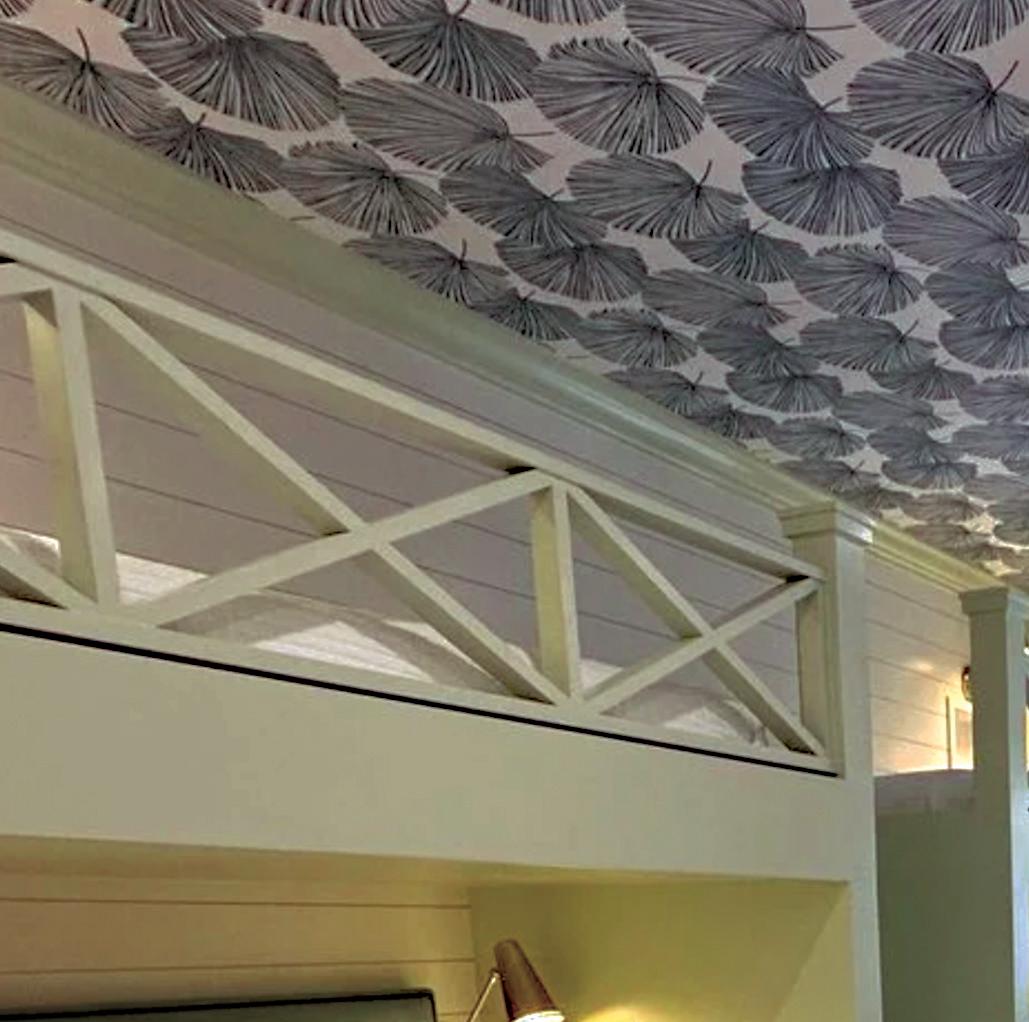













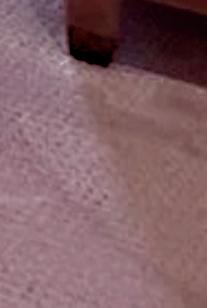
STORY BY KIM EPLEY + PHOTO BY AMIA MARCELL
Kim Epley, artistic director at The Studio at Farmer Blue, designs using flowers from her 12-acre Seabrook farm. This month, her autumn arrangement honors gratitude and the graceful rhythm of the Lowcountry seasons.

nNovember invites us to slow down, breathe in the crisp Lowcountry air and take stock of what matters most. On the farm, the fields glow in copper and gold as dahlias reach their crescendo and marigolds bloom like tiny suns across the rows. This month’s arrangement captures that fleeting radiance, the warmth before winter’s rest. Designed with locally grown dahlias, marigolds, Japanese anemones and bittersweet orange, it celebrates the balance between abundance and stillness, beauty and impermanence, with just a touch of whimsy. The palette feels both earthy and ethereal, with bronze, peach, ivory and flame tones that mirror nature’. It’s a reminder that gratitude grows from presence, not perfection.

1. Dahlias
2. Marigolds
3. Japanese anemones
4. Bittersweet orange
Earth meets sky: Golden marigolds and cascading amaranthus ground the design, while bittersweet orange and anemones lend lift and lightness, creating an interplay of rootedness and air.
Farm-grown authenticity: Every bloom was grown right here in South Carolina soil. Using what’s in season connects your home to the land and to the natural rhythm of Lowcountry life.
Texture in motion: Dahlias bring sculptural precision, while amaranthus and fern add gentle movement that echoes November’s shift between fullness and rest.
Gathered elegance: The design feels natural, not formal. It’s an easy celebration of color, air and gratitude, perfect for a Thanksgiving table or an entryway console.
Let nature lead. Choose blooms that reflect what’s truly in season, such as dahlias, marigolds and anemones for an arrangement that feels fresh and alive.
Work in layers. Start with supporting florals, add your showstoppers like dahlias, weave in airy stems such as bittersweet orange and anemones and finish with cascading texture from amaranthus or grasses. Choose warm vessels. A low brass compote, ceramic bowl or woven basket complements autumn’s tones and brings a relaxed sense of elegance.
Add candlelight. Surround your design with taper candles in amber, cream or bronze glass. Their soft glow completes the cosmic warmth of the season. Tend with care. Recut stems every few days and refresh the water daily. Dahlias reward gentle attention with surprising longevity.













STORY BY BAILEY GILLIAM
On a clear Lowcountry night, when the breeze carries a hint of salt and the tide glimmers, look up. Beyond the palms and live oaks, you might spot Orion, the Big Dipper or passing airplanes. But if you linger a little longer, you’ll find man’s best friend shining among the stars. Nearly half of the 88 official constellations are animals, with several of them being dogs. Faithful, guiding and forever by our side, these celestial canines have earned their place in the heavens and in the hearts of stargazers everywhere.


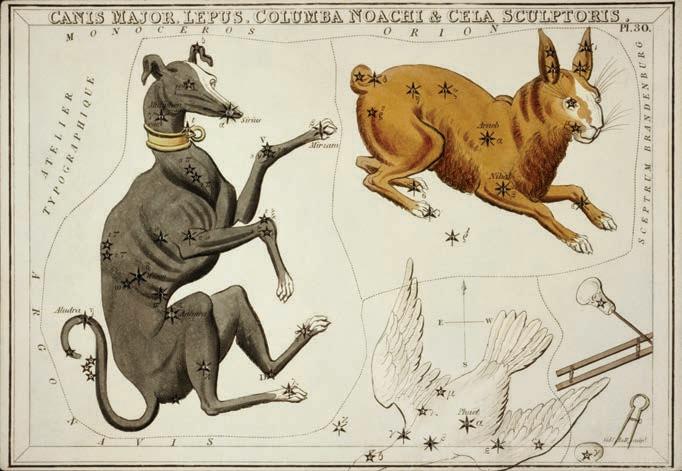


Canis Major Known as the “Greater Dog,” this constellation is the top dog of the night sky. To the Greeks, it was Laelaps, the magical hound of Zeus, or Orion’s loyal hunting companion chasing a hare. To find Canis Major, trace Orion’s belt downward until you reach Sirius, the Dog Star, the brightest star of all, marking the hound’s gleaming neck. On a cool winter night over the marsh, Sirius sparkles like a reflection on the May River.

Canes Venatici These lesser-known pups belong to Boötes the herdsman, whose hounds Asterion and Chara chase the Great Bear, Ursa Major, across the northern sky. Thanks to a translation mix-up long ago, Boötes’s club became a pair of dogs, and the story stuck. Look for them between the Big Dipper’s handle and the golden light of Arcturus in spring, best seen from a quiet dock when the air is still.
Canis Minor Smaller but no less devoted, the “Lesser Dog” shines with its own legends. Some said it was Maera, the faithful dog of Icarus, while others saw the jackal-headed Anubis guiding souls to the afterlife. Draw a line east from Orion’s belt to find Procyon, its brightest star, glowing softly above the horizon on crisp evenings.
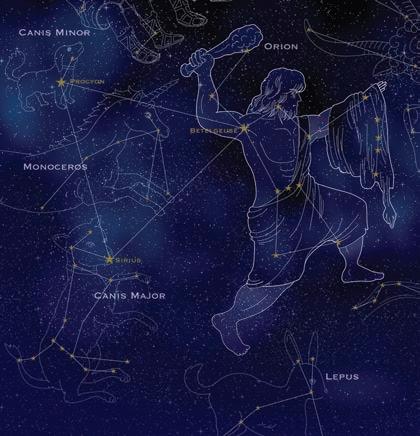

Sirius and Procyon The brightest duo in the heavens, Sirius and Procyon have long marked the changing of the seasons. The ancients called Sirius the “Scorcher,” believing its rise brought the dog days of summer. Here in the South those sweltering days still make dogs stretch out in the shade, proof that some legends live on.





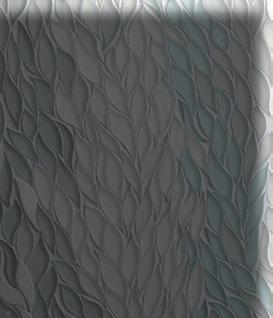







rRamona may be small in stature, but she’s mighty in charm. Found as a stray, Ramona arrived unsure of the world, but has slowly learned that love comes with gentle hands, soft voices and an endless supply of Pupperoni. She’s shy at first, but give her a quiet moment and a squishy plush toy (bonus points if it’s bigger than she is), and she’ll be melting into your lap in no time. Her favorite activities include snuggling, hoarding toys in her bed like treasure and gazing lovingly at her chosen humans. Ramona would thrive in a calm, predictable home with someone who understands that trust takes time, but the rewards are endless.
Colors: Tan Age: 4 years Weight: 20 pounds Likes: Pupperoni, stealing oversized plushies, cozy naps, quiet companionship Dislikes: Loud environments and too much chaos Adopt: Meet Ramona at Hilton Head Humane between 11 a.m. and 4 p.m., Monday through Saturday. For more information, call 843-681-8686 or view her profile at hhhumane.org




Felt is a 7-year-old American Shorthair with the kind of presence that turns heads and the confidence to match. With a sleek tuxedo coat and mesmerizing green eyes, she’s as regal as she looks, and yes, she expects to be treated accordingly. Originally adopted in 2019, Felt returned to the shelter after her owner moved into assisted living. She’s handled the transition with grace (and a little attitude), and she’s now seeking a new human to rule over with affection, humor and just a dash of sass. She’ll happily accept pets and cozy naps by your side, but don’t expect her to tolerate nonsense; queens have boundaries, after all. She may look slightly miffed in her photo, but that’s just her resting queen face. In reality, she’s affectionate, playful and will slow blink her way right into your heart.




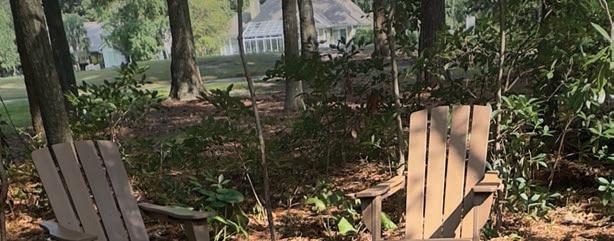



























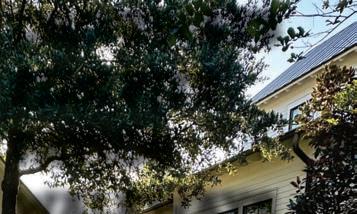









STORY BY BAILEY GILLIAM + PHOTOS BY MARY ALICE TARTLER

LISTEN UP
Scan this QR code to hear the call of the purple finch.

aAmong the more colorful winter visitors to the Lowcountry, the purple finch is both a visual treat and a bit of a wildcard. They don’t always show up, but when they do, their rich, raspberry-colored feathers light up the landscape. The males earned a vivid comparison by naturalist Roger Tory Peterson, who called them “a sparrow dipped in raspberry juice.” Once you see one, you’ll know exactly what he meant.
The females, while less flashy, have a striking beauty of their own. Their bold facial markings, crisp brown streaks and bright white eyebrows give them a look of confidence and seem almost stern, but in the best possible way. Because these finches don’t migrate on a predictable schedule, their visits are hit or miss. Some winters they’re plentiful; other years they vanish entirely, choosing to spend their season elsewhere. If you’re hoping to attract them, a feeder filled with black oil sunflower seeds is your best lure.
While they may look refined, purple finches are surprisingly rowdy at the feeder. They eat with enthusiasm, scattering shells and shoving for position like kids at a birthday party. And they’re discerning eaters too. Studies show they prefer thinner sunflower seeds over thick ones. Their sturdy beaks aren’t just for seeds, though. They’ll sample buds, berries and even sip nectar by biting into the base of flowers. In doing so, they unintentionally help pollinate, one of the few finches to double as part-time florists. Their menu includes dandelions,
crabapples, poison ivy berries (yes, really) and the occasional insect, making them both messy and marvelously useful guests.
Socially, purple finches have big personalities. Around feeders you’ll see plenty of squabbles, with neck stretching, beak pointing and dramatic pecking that looks straight out of a soap opera. Their courtship rituals are equally entertaining. The males puff up, hop around awkwardly, sing a soft tune and present a twig or blade of grass as if offering flowers. If the female approves, he caps it off with a short vertical flight and a skyward pose that looks a lot like bird yoga. All in all, the purple finch is a bold, beautiful, slightly unpredictable winter visitor. When they grace the Lowcountry with their presence, they bring not just color but character, a reminder that even the quieter months can surprise us with a flash of life and a touch of joyful chaos.
“Offer them their preferred foods, such as black-oil sunflower and nyjer seed, in tube or hopper feeders. Providing a reliable source of water, especially a heated bird bath in winter, will make them feel at home. If you spot this striking bird at your backyard feeders, you are indeed lucky. Your eye must catch the raspberry color of the male. The female is drab brown with a prominent white eyebrow. Purple finches are stockier than their relatives, house finches. Look for the thick, conical bill, built to crush seeds. The tail is the most obvious difference between a purple finch and a house finch. There is an obvious, pronounced notch in the tail.” – Mary Alice Tartler, master birder

The female purple finch may lack the flashy hues, but her crisp markings and confident presence command attention in the backyard.
Get everything you need for backyard birding at Wild Birds Unlimited in the Festival Centre at Indigo Park on Hilton Head Island.
FOOD & ACCESSORIES
• Black oil sunflower or nyjer seeds
• Finch blend or no-mess blend seeds
• Finch feeder, seed tube feeder















The days shrink quickly now, with earlier sunsets made even sharper by the time change on Nov. 2.
Sunrise: 7:05 a.m.-7:40 a.m. (later each day)
Sunset: 5:17 p.m.-6:32 p.m. (earlier each day)
November settles in with cool mornings and crisp nights. Dolphins cut through the creeks chasing the last mullet runs, while flocks of ducks and geese sweep overhead before pausing in ponds and waterways on their way south. In the woods deer grow restless at dusk, yaupon and holly brighten with red berries, and camellias begin to open against a backdrop of live oaks shedding their leaves. Festivals and fall gatherings crowd the calendar, giving the month a rhythm of gratitude and connection. Guided by the 2025 Old Farmer’s Almanac and Grow Great Vegetables South Carolina, consider this your field guide to making the most of it.
Late autumn settles in for good, and the shift is clear by mid-month. Cooler days and crisp evenings arrive, with a mix of sunny stretches and chilly rain.
Average temperature: 55 degrees (1 degree above average)
Rainfall: 2.5 inches (1/2 inch below average)
FORECAST BY WEEK
Nov. 1-3: Sunny, warm
Nov. 4-10: Sunny, then rainy; cool
Nov. 11-20: Sunny, then rainy; chilly
Nov. 21-30: Sunny; chilly, then turning warm

The sky puts on a show this month, if you’re willing to bundle up.
Nov. 4-5: The Taurids meteor shower peaks, famous for bright, slow fireballs.
Nov. 5: A full super moon, the Beaver Moon, rises. The name comes from beavers busily preparing for winter.
Nov. 17-18: The Leonid meteor shower streaks across the sky, radiating from Leo.
Nov. 20: A new moon darkens the night, perfect for stargazing.

Stay in tune with the coast’s natural rhythm. Scan this QR code for up-to-date tide and current predictions from NOAA.
The garden winds down, but there’s still plenty of green to keep you busy.
PREP Make notes on what thrived and what struggled. Test your soil and spread lime if needed, set out row covers for frost, and work in compost before mulching empty beds.

PLANT Shorter days mean slower growth, but you can still sow hardy greens like collards, lettuce, kale, spinach, radish and arugula. Covercrops such as rye, Austrian winter peas and wheat help feed the soil for next spring.
HARVEST November’s kitchen garden offers arugula, broccoli, Brussels sprouts, cauliflower, carrots, celery, cilantro, chard, Chinese greens, collards, kale, leeks, lettuce, mustards, parsnips, scallions, spinach and turnips. Perfect for hearty soups and Thanksgiving sides.

The moon has a way of tugging at more than the tides. Let it guide your plans this month:
Go fishing: Nov. 1-5, 20-30
Make jam: Nov. 1, 28-29
Vote: Nov. 4
Bake bread: Nov. 12-13
Go camping: Nov. 20-22
Give thanks: Nov. 27























STORY BY ALEA WILKINS AND SUZANNE BARTON

Nothing disrupts the holiday season like feeling under the weather. Plants, too, can catch a cold, and when left exposed to the elements, frost settles over gardens like the flu. While frost cloth and other protections help before the temperatures drop, even the most prepared gardeners may find their blooms in need of some TLC. For a remedy as fail-proof as chicken noodle soup, Suzanne Barton, manager of The Green Thumb, says a little love and patience go a long way. Some veggies even enjoy a cold plunge. She also shares advice for any house-party guest looking to share their garden’s bounty this holiday season, ensuring every friend and flower is taken care of.

SWEET SURVIVAL Frost might look harsh, but some veggies thrive in the chill. Cabbage, kale, broccoli and other hardy greens turn starch into sugar when temperatures drop, making them taste sweeter after a cold snap. Think of it as nature’s way of adding a sprinkle of seasoning.

COLD CASUALTY Not every plant appreciates a frosty wake-up call. Tender crops like squash collapse after freezing, their cells ruptured by ice. If stems turn mushy, it’s best to clean up the damage and try again next season.
FROZEN BUT FORGIVEN Frost isn’t always fatal. Many established shrubs, trees and perennials can bounce back with patience. Give them shelter from harsh winds, avoid fertilizing, and let time do the healing. Spring will reveal what survived.
[LOCAL Life] Can I save plants accidentally left out in the frost? [Suzanne Barton] Our first frost usually hits in December or January, but it’s best to start preparing now so there are no surprises. If your plants do happen to get caught in an overnight frost, they may be salvageable with some care and patience. Move potted plants to a sheltered location, either indoors or near a south- or west-facing wall, that will block the harsh winds and keep the soil a little warmer. If the soil seems dry, water sparingly, but never fertilize. Fertilizing forces the plant to expend its energy on new growth when it should be focusing on healing. Be patient and let the plant cure itself. Sometimes you may need to wait until the spring to assess the extent of the damage. The only caveat here is if the plant turns mushy. This can happen to herbaceous plants (like tropicals or perennials) that have frozen, which causes their cells to burst. If your plant is mushy, clean it up and look for new growth in the spring.
[LL] Are there any plants that benefit from the frost? [SB] Yes, some produce tastes better when exposed to frost. Cabbage, broccoli, carrots and turnips all get a little sweeter in the cold, along with hardy greens like kale, spinach, collard greens and Swiss chard. These veggies are high in starch and, because of an evolved defense mechanism against the frost, their starch converts to sugar when the weather cools. Sugar lowers the freezing point of the water contained in the plant’s cells, so when the temperature drops, the starch converts to sugar to protect the cells from getting too cold and bursting. It’s a win for the produce and for us – lightly sweet veggies make for delicious seasonal meals.
[LOCAL Life] My newly planted canna lilies were very prolific this year. Should I dig some of the bulbs up to share in the fall or the spring? [SB] If you’re trying to give the lilies away as gifts this season, you can dig them up now, but since they were newly planted, I’d recommend waiting until the spring. When you dig late in the growing season, the bulbs won’t have time to establish themselves again before it gets too cold. In the spring you can dig them up when you see new growth. To make sure the bulbs are healthy, check for three to five eyes on the bulbs. This indicates the best chance for vigorous growth and they’ll have plenty of time to establish themselves in the ground before it gets too hot again next summer.



Smart seasonal tips from Lowcountry Gardening, a guide written and produced by the Lowcountry Master Gardener Association

When cold temperatures are forecast, protect your plants by watering them well at the roots; moist soil holds more heat than dry soil. For additional protection, cover the plants with fabric or lightweight blankets. Frost cloth works especially well since it resists water in addition to providing thermal protection. If purchased on a roll, you can cut the exact size and shape for your plant. Never use plastic! Make sure the plant cover extends and is secured to the ground to create a small dome of insulation. Cold fronts often come with stiff winds, so tie down covers. Remove the covering when it begins to warm up.
Frost-damaged foliage should be removed from plants, such as farfugium (tractor seat plants), split-leaf philodendron and gingers to discourage fungi and disease. You’ll be surprised how quickly farfugium grows when it warms up. Other established plants should rebound in the spring.
Excerpted from Lowcountry Gardening, written and published by the Lowcountry Master Gardener Association. Grab a copy of this handy guide to all things Lowcountry gardening for $5 at The Greenery, Bruno Landscape & Nursery, The Green Thumb or the Master Gardener booth at the Bluffton and Port Royal farmers markets. For more information, head over to LowcountryMGA.org



















A dramatic neighborhood rescue turned a local dolphin into a media star, but for USCB researchers, she’s been a familiar fin for more than a decade
STORY BY CAROL WEIR


A dramatic rescue in a Bluffton neighborhood gave a local dolphin a moment of national fame — but researchers at USCB have known and followed her for years.


A nearly 8-foot-long female dolphin, known as “Lucky” to the team at the Lowcountry Dolphin Conservation Program at USCB's Marine Sensory and Neurobiology Lab, was rescued from a shallow tidal lagoon in the private Hampton Lake community in July after she became stranded. Officials believe Lucky swam through a culvert connecting to the May River at high tide during a storm surge. When the tide receded, she became trapped in 2 to 3 feet of water.

Neighbors, firefighters and members of a nonprofit for marine mammals worked together to rescue her and release her into the May River, where the USCB team has been collecting data about her and other dolphins for over a decade.
On July 12, a passerby in Hampton Lake noticed the dolphin in distress and told a neighbor familiar with wildlife rescue. This neighbor contacted the Lowcountry Marine Mammal Network, the federally authorized entity for marine mammal rescue in South Carolina.
USCB researchers identify Lucky by her uniquely notched dorsal fin.
Lowcountry Marine Mammal Network dispatched a team from Charleston, joined by volunteer Amber Kuehn, who also heads Sea Turtle Patrol Hilton Head Island.
They called the Bluffton Township Fire District for help with transporting the nearly 500-pound wild dolphin out of the lagoon. The rescuers guided Lucky onto a marine tarp and then carried her up an embankment. They then loaded her onto a utility trailer provided by Kuehn and released her off a private deep water dock on the May River.
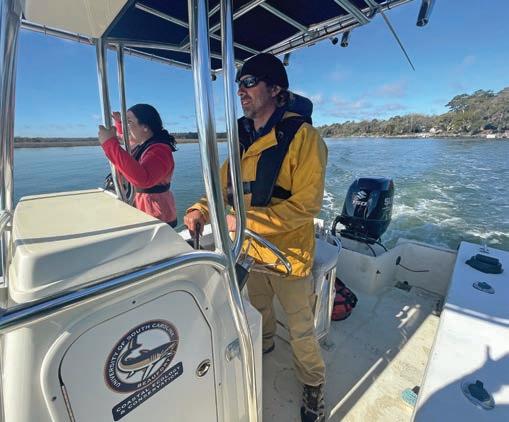
SCIENCE ON THE RIVER USCB’s Dr. Eric Montie and his lab manager Alyssa Marian conduct dolphin surveys in the May River and have been observing Lucky since 2015. Montie's Lowcountry Dolphin Conservation Program at USCB's Marine Sensory and Neurobiology Lab is one of the Lowcountry's longest-running scientific studies.
The rescue went viral, reaching millions of viewers through traditional news outlets and social media. Lucky appeared on ABC World News, in Firehouse magazine and in regional and local news.
Since then, Lucky remains on the radar of the dolphin program, directed by biology professor Eric Montie. The program runs one of the Lowcountry's longest-running scientific studies. Montie and his staff and students also conduct long-term acoustic monitoring of the May River estuary as part of the Estuarine Soundscape Observatory Network in the Southeast (ESONS). Researchers are learning to distinguish vocalization patterns, particularly whistles and burst pulses, between resident and migratory dolphins.
“Over the years we’ve recorded everything from the constant crackle of snapping shrimp to the complex courtship calls and choruses of fish, as well as the vocalizations of bottlenose dolphins," Montie said. “It’s not far-fetched to think that one day we might identify Lucky’s presence through her unique acoustic signature alone.”
Following Lucky's rescue, the team has observed and photographed her in the May River near the headwaters and Palmetto Bluff, where she is frequently sighted.
"We spotted her swimming and behaving normally," said Alyssa Marian, who has managed Montie’s dolphin survey program since 2020. "She does have some new scarring on the tip of her dorsal fin."




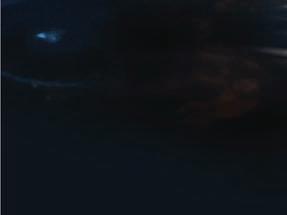






Marian says the new injuries appear to be healing well.
Lucky seems unimpressed by her notoriety and has returned to spending time with other year-round May River residents, including many females with calves. Researchers call these “nursery groups.” Lucky is a Tamanend’s bottlenose dolphin(Tursiops erebennus,formerly Atlantic bottlenose dolphin), which is the only dolphin species found in the South Carolina Lowcountry.
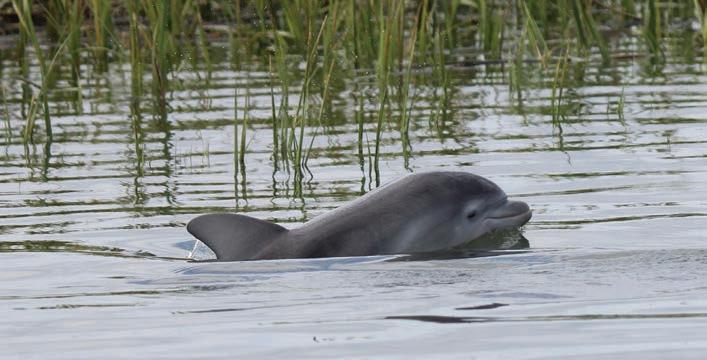
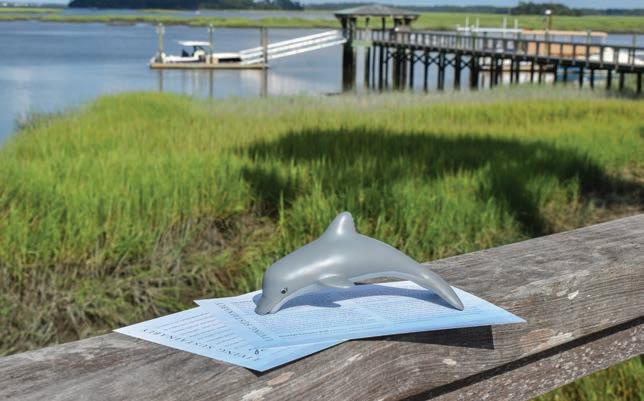
OF SUSTAINABILITY Lucky is the symbol of Montage Palmetto Bluff’s sustainability program, which includes conservation measures in the resort’s guest rooms, dining facilities, grounds and the May River Golf Club. A card placed in each guest room explains the resort’s support for Montie’s dolphin research.
Montie first sighted Lucky in 2011 and began monthly dolphin surveys in 2015. He and his team of faculty members and students easily recognize Lucky, based on distinctive notched markings on her dorsal fin — scarring they think may have been caused by a boat strike.
Lucky has been documented raising three calves. Fortunately, no calf followed her into the lagoon during the incident. Of the 140 dolphin surveys conducted by Montie and his team since 2015, Lucky has been seen on 74 of them.
"This is more than any other dolphin in our catalog," he said.
Twice a month Montie and his team travel the May and Chechessee rivers, counting adults, calves and newborns, as well as deploying and retrieving underwater acoustic recorders. This labor-intensive research by boat is expensive, and community support has been vital to allow it to continue.
LUCKY’S LEGACY
Lucky is a yearround resident of the May River and the mother of three calves, including this one.
Since 2019 Montage Hotels & Resorts has donated $36,000 toward Montie's dolphin research. This supportfalls in line with the resort's mission of environmental conservation and preservation. Lucky is the five-star resort’s eco-representative and serves as a symbol for Montage Palmetto Bluff's sustainability program, which includes moreefficient laundry practices, paper straws and to-go boxes at its dining outlets, and conservation practices at Palmetto Bluff's May River Golf Club (a Certified Audubon Cooperative Sanctuary).
"By partnering with Dr. Eric Montie and his team at USCB, Montage Palmetto Bluff will have a better understanding of the behaviors and needs of the [Tamanend’s] bottlenose dolphin in the tidal estuaries and rivers that make up the Lowcountry," Montage Palmetto Bluff said in a statement.
Other community support for Montie's bottlenose dolphin survey program comes from Port Royal Sound Foundation, the Coastal Discovery Museum'sAdopt-A-Dolphin program and Pritchards Island Research.
"It is truly a community effort that keeps everything going — fuel, boat and truck maintenance, and support for students," Montie said.
Dolphins aren’t just part of the Lowcountry’s ambiance, they’re protected by strict federal laws. That means if you come across a stranded dolphin, you should never attempt to handle it yourself. Only trained experts with federal authorization can provide care. Dr. Montie and his team are among those experts, conducting their work under a National Marine Fisheries Service permit. If you see a dolphin in distress, call:
Lowcountry Marine Mammal Network Stranding Hotline: 843-6331132. Teams respond to strandings all along the South Carolina coast.
NOAA Fisheries Marine Mammal Stranding Hotline: National, 877-433-8299
If you’re unsure or can’t get through, call local authorities (such as the Bluffton Township Fire District or Beaufort County Sheriff’s Office), and they will connect with the authorized responders. LL

Lucky frequents the headwaters of the May River near Palmetto Bluff. Montage Palmetto Bluffton naturalist Cassie Critchlow (left) often spots her near the resort during nature walks.

STORY + PHOTOGRAPHY BY AUDREY GEIB




eEvery day the moon pushes and pulls the Atlantic, carving out beaches, guiding fish and shaping the lives of those who call the coast home. Tides rise and fall because of the gravitational forces of the moon and sun. Roughly every six hours the ocean swells inland and then retreats, creating a predictable pattern of high and low tides.
The severity of these shifts depends on the moon’s phase. During a full or new moon, the sun, moon and Earth align, producing the highest tides, known as spring tides, which happen roughly every 15 days. A king tide is an unusually high spring tide that occurs a few times a year when the moon is at its closest point to Earth (perigee) and/or when the Earth is at its closest point to the sun (perihelion). Conversely, when the moon is in its first or third quarter, the sun and moon pull from different angles, creating the month’s lowest tides, called neap tides.



RISE AND FALL These two photos, taken just steps from Hudson’s Seafood House on the Docks, capture the swing between high and low tide. In the above photo Skull Creek pushes right up to the rocks, lapping at the shoreline, with hardly any marsh grass in sight. Hours later, the photo to the left shows a completely different landscape: the water has drained away, exposing oyster beds, mud flats and long fingers of spartina grass. It’s a striking reminder of how quickly the tides reshape the Lowcountry’s edges and why locals keep one eye on the water when planning their day.
For beach goers, tides might mean a shorter walk across sand or a wider stretch for biking. But for the animals of Hilton Head, the daily rhythm is essential.
Amber Kuehn, local marine biologist and executive director of Sea Turtle Patrol Hilton Head Island, said every high tide carries in nutrients and small creatures, while every low tide pulls material back out, constantly refreshing the marsh.
Without this flushing, marsh crabs couldn’t open their burrows to release gases and aerate the soil, a process that fuels the growth of Spartina grass. The tide also carries out dead reeds from the grass which wash onto beaches, where sand piles around them to form dunes that protect the island.








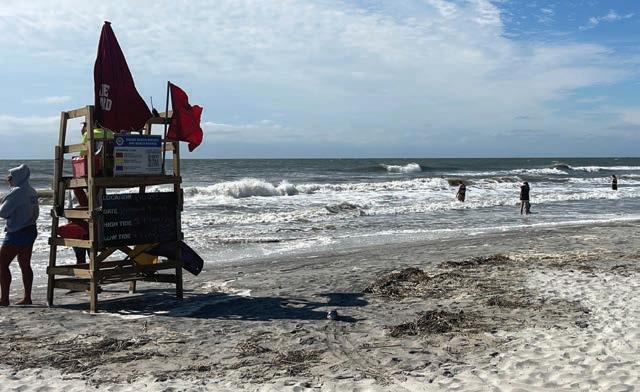










Even for casual visitors, tides can shape the perfect beach day. At low tide wide expanses of firm sand invite walking, biking or shell hunting. At high tide the water presses close, leaving less space for chairs, umbrellas and play.
“A lot of people don’t realize just how different the beach looks at high versus low tide until they see it for themselves,” said Nick Cargo, lifelong local and owner of Cross Island Bike Rental.
Staying aware of tide schedules prevents towels from getting washed out and helps families plan better. Cargo said a little preparation goes a long way: waves are best just after high tide, while skim boarders find their stride at low tide on long stretches of glassy sand.
For charter captains Donovon McCoy and John Werner, tides determine where and how they fish.
“Redfish are our bread and butter,” McCoy said. “You can catch them every day of the year, just in different ways.”
The key is moving water. When the tide is coming in or going out, bait moves with it, and where bait goes, the fish follow.
“You definitely want some current,” he explained. “Whenever the tide is slack, you can still catch fish, but it’s not as good.”
Werner agreed, noting that slack tide makes fishing harder because less food is carried to the fish. Moon phases also matter; full and new moons bring dramatic spring tides with stronger currents, while neap tides are calmer and easier to fish since anglers aren’t battling large swells.
“Those are fun times to fish because you’re not competing with all those big currents,” Werner said. “You get a lot more time to fish certain things, more than you would if it were a really big tide, because there is not as much water moving.”
Nature’s fishermen follow the same cues. Dolphins, for instance, often wait at the marsh edge during an outgoing tide, snatching up young fish as they are flushed out of their hiding places within the grass.
The steady rise and fall of the tides is what keeps Hilton Head’s ecosystem thriving, sustaining everything from marsh crabs to dolphins. Werner described it in human terms, comparing Spartina grass to skin and oyster beds to bone structure, with the tides themselves serving as the heartbeat.
“Two high tides and two low tides a day,” he said. “It’s a self-cleansing environment. That’s the most amazing thing about Hilton Head. That’s the heart of it, the heart of everything around here. It's tides.”
Whether you’re casting a line, setting up a beach chair or watching the marsh grass sway, the tides are always in motion, and life in the Lowcountry moves with them.




The moon’s pull doesn’t play favorites. Some days it tugs a little harder, other days not so much and the results shape everything from fishing trips to beach walks. Here’s a quick look at the main players in the tide cycle, each with its own rhythm and impact on Lowcountry life.
What it is: A tide with extra-high highs and extra-low lows.
Why it happens: The sun, moon and Earth line up during a full or new moon, and their pull stacks up. When it shows up: About twice a month (roughly every 15 days).
Tide tidbit: The word “spring” has nothing to do with the season; it comes from the Old English springan, meaning “to rise.”
What it is: The big one. The highest tide you’ll see all year, a super-charged spring tide.
Why it happens: The moon swings in close to Earth (perigee), and sometimes the Earth cozies up to the sun (perihelion). The timing lines up, and the water climbs. When it shows up: Once or twice a year, often in fall or winter.
Tide tidbit: King tides can swallow entire stretches of beach and flood waterfront lots and restaurants.
What it is: A tide that barely flexes, with only a small difference between high and low.
Why it happens: The sun and moon pull at right angles during the first and third quarter moons, canceling each other out a bit.
When it shows up: Twice a month, alternating with spring tides.
Tide tidbit: Neap tides make for calmer currents, handy for fishing or paddling when you’d rather not fight the flow.
What it is: Water moving in, pushing higher on the shore and into the marsh. Why it matters: Redfish slip into the grass to feed, and kayakers can glide into spots that are bone-dry at low tide.
Tide tidbit: On warm summer evenings, watch for “tailing redfish.” Their fins flick above the grass as they root around for food.
What it is: Water draining out, exposing mud flats and oyster beds. Why it matters: Dolphins often line up at creek mouths during an ebb, snatching fish flushed out of the marsh.
Tide tidbit: The word “ebb” comes from Old English ebba, meaning “receding.”
What it is: The brief pause between high and low when the water seems to stand still.
Why it matters: With little current, it’s not the best time to fish, but it makes swimming and paddleboarding easier.
Tide tidbit: Locals sometimes call it “dead tide” because the water looks almost lifeless.



THE FREEDOM STAR
During the 1800s enslaved people in the South looked to Polaris, the North Star, as a guide to freedom.
Because it holds steady in the northern sky, Polaris pointed the way toward safe territory and the promise of a new life.

STORY BY MACKENZIE LIONBERGER
FROM THE LOWCOUNTRY TO THE OPEN SEA, POLARIS AND THE CONSTELLATIONS POINTED THE WAY
lLong ago, directions weren’t glowing on a screen in your hand but were scattered across the heavens. Long before GPS, the first “map” wasn’t downloaded. It was written in light. For thousands of years, constellations, planets and stars guided explorers across oceans, including the very voyages that shaped the world we know today.
Picture yourself on a wooden ship at night, the black water stretching in every direction. The only light comes from a dome of stars overhead, the salt air clinging to your skin, the steady creak of timbers beneath your feet. That sky was once a sailor’s only guide.
From Europe to the South Carolina coast, navigators trusted age-old methods to find their way. The most reliable guides were Polaris, also known as the North Star, and the Big Dipper. To find Polaris, look for the two stars at the edge of the Big Dipper’s bowl. They point directly toward it. Once spotted, Polaris gave sailors the confidence to hold their course. They also discovered a clever trick. By measuring the angle between the North Star and the horizon, they could determine latitude. Along the Lowcountry’s flat coast, with wideopen views of the horizon, this method worked especially well.










One of the most recognizable constellations in the night sky, the Big Dipper forms part of Ursa Major, the Great Bear. Its scoop-shaped pattern has long served as a celestial pointer, with the two stars at the edge of the bowl leading directly to Polaris, the North Star.








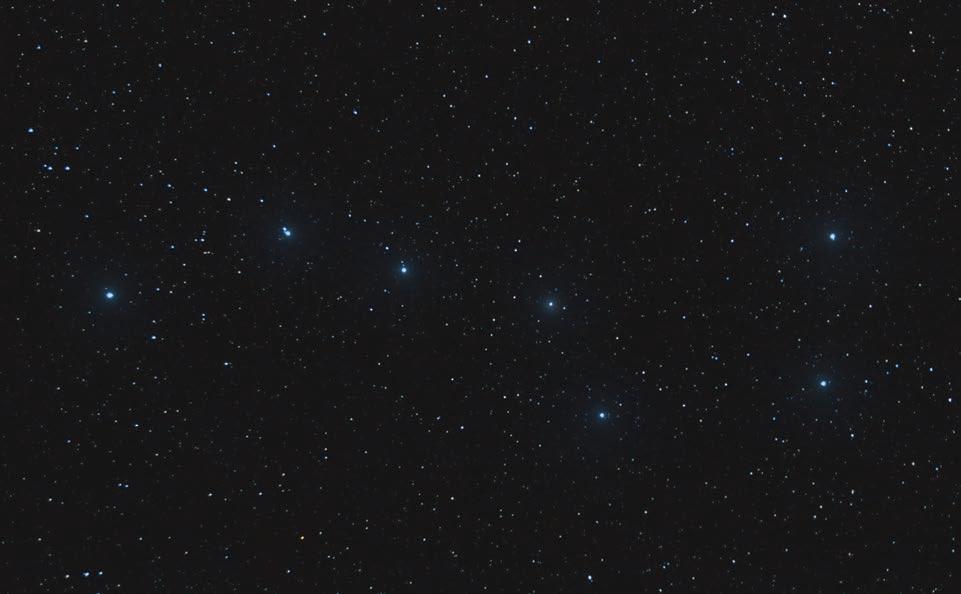






As voyages grew more ambitious, sailors needed tools that could keep up. In the 1730s they began using the octant, shaped from one-eighth of a circle, to measure the angle between a star and the horizon. That simple reading revealed a ship’s latitude and gave navigators a better sense of where they stood on the ocean.
By the late 1700s, the sextant refined the process. Shaped from one-sixth of a circle, it paired star sightings with maritime tables for pinpoint accuracy. The sextant proved so dependable that ships still carry them today. Even with GPS, modern vessels such as Navy ships and local sailboats keep one on board as a backup.


The Lowcountry’s wide horizon made for excellent stargazing, but weather was an ever-present obstacle. Charleston bustled as one of the busiest ports in the 1700s, yet its sailors faced fog, sticky humidity and sudden storms that could blot out the heavens.
Hurricanes made things even more treacherous, sometimes hiding the stars for days. Unlike drivers today, sailors could not pull off to wait out the weather. They pressed on, trusting that Polaris would eventually break through the clouds to guide them home.
Just as you might groan at a GPS that sent you to the wrong side of town, sailors sometimes misread the sky and ended up far off course. To prevent others from making the same mistakes, they began sketching navigational charts of the night sky.